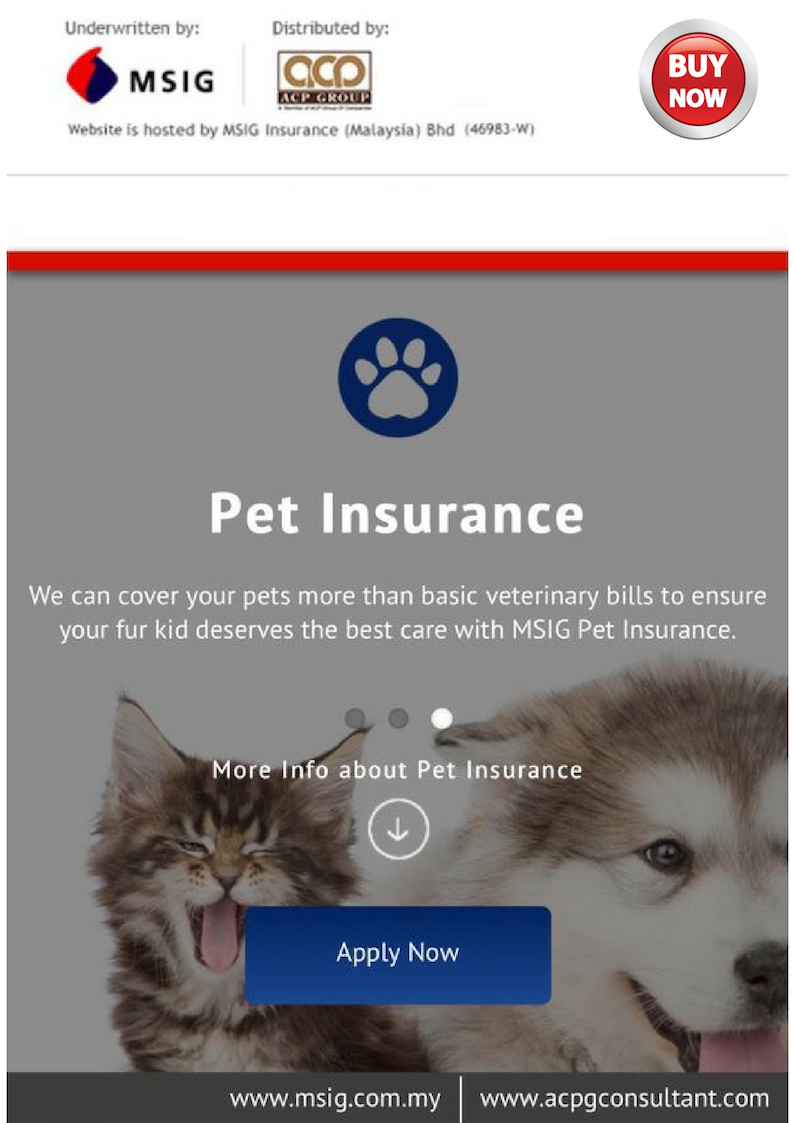


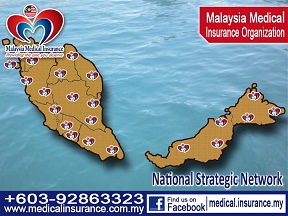

Malaysia Medical Insurance Professional and Technical Training Program, MMI Medical Insurance Training Program, Malaysia Health and Accident Insurance Training Program, Malaysia Medical Protection Insurance Training Program
Malaysia Medical Insurance Organization (MMI)

Course summary
Course summary
This MMI Medical Insurance Professional and Technical Training Program (MIPT) focuses on developing future Malaysia Medical Insurance Organisation (MMI) associate members or medical insurance advisors with soft and hard skills and competencies to deal with the constantly changing medical insurance business environment.
This "MIPT" programme equips MMI associate members with multidisciplinary knowledge and perspectives and develops their ability to lead flexible, responsive, responsible, efficient and effective organisations in the era of globalization.
The strength of this "MIPT" programme is the embedment of the elements of experiential learning into the teaching and learning process by extensive use of case studies and engagement of corporate leaders.
This "MIPT" program is designed in such a manner so that participants who go through the program will be able to perform the following: integrate and apply advanced business knowledge and skills in marketing and services; apply technical and practical skills toward the accomplishment of business objectives and goals; exercise analytical ability and apply social considerations when making planing and marketing decisions; communicate effectively, with different customers; develop social skills and demonstrate social responsibilities when working in a team; demonstrate professionalism and compliance to ethical standards in executing accountabilities and responsibilities; create lifelong learning culture by using information and communication technology to keep abreast with the changing medical insurance business environment; exhibit managerial and entrepreneurial skills for effective decision making and portray leadership qualities in managing a business strategically.
For the past three decades, our achievement in the education sector, we believe in developing people and transforming life using some of the most effective methodologies and techniques in experiential education program. We assist every individual and corporation to improve their performance in this challenging world.
Come and unleash your potential with our experiential MMI outdoor education program. Our proven learning methodology has helped our MMI associate members achieving their desired personal and corporate objectives.


| GENERAL INSURANCE TRAINING (Arranged by The Malaysia Insurance Institute - MII) |
MII will advise you or your contact person on the status of the MII training programme upon receipt of your completed registration form. Please ensure that you have received MMI confirmation advice before making any logistic arrangement such as accommodation and flight bookings.

Have you ever experienced being admitted to a hospital because of your illness and your eyes bulge when you see the expensive medical bills that you have to pay for and you don’t have enough money to pay it? There is a saying that when we are young, we work too hard and trade our time and health for money. Then when we are old, we trade our money to hopefully gain back some health.
This is so true because there are so many old folks who save hard and put the money in the bank but the interest earned is barely enough to cover the medical cost inflation.
Nowadays, many people had realized the high cost of being hospitalized. When medical fees keep escalating, more people are aware and seek for medical insurance coverage. So the first step towards cutting medical expenses is to get insured, while you are still qualified to apply for total coverage.
1.Get insured with Hospitalization & Surgical benefit
I explained about medical insurance before. Refer the video for a very simple and easy to comprehend presentation.
Utmost, personal health should be one’s top most priority. You can’t go to work if you are having a high fever, right? Because if you do, you won’t be that productive compared if you are on your normal state.
In the past, I’ve met several MLM or direct salespersons who normally sell all kind of health product. Once they know that I’m an insurance agent, they almost always pitch the idea that when you eat healthily and take good care of your body, you’ll never get sick. Therefore, there is no need to buy medical insurance.
This statement may have some truth in it although some insurance agents may get offended by the whole idea of stay healthy and throw away your "medical card”. So the second obvious tips on cutting medical bills is to live a healthy lifestyle!
2.Eat organic food, workout regularly, and take care of your personal hygiene and your home’s cleanliness to have a healthy lifestyle, therefore a healthy body.
However, if you are too late to get insured, or your health is already depleted in some way, don’t be panic. There are still more tips coming up that may save your hospital bills. Just in case you are hospitalized (touch wood) due to unforeseen circumstances, here are more tips that could get you going.
3. Have your previous test report ready and decline other unnecessary "add-on”
First things first, for you to lessen the cost of your medical bills, you have to have your updated previous test results for your health with you. If the test was taken days ago, then you could bring that when you want to be admitted on a hospital. These previous results that you have could lessen your cost since you will not take some tests because they are going to refer the results on what you have. But bear in mind that not all previous results is helpful when you want to cut costs. Some tests need to be taken anew to provide you progress or update on your current health and for them to find out if there is anything wrong with your present health.
Another thing to remember when you want to prevent necessary costs is that, when you have a hospital room, you can always decline offers of having a television set on your room or a fridge there to be put, or any additional appliance or room ornaments that add up to your costs. By doing these things, you can start saving your costs though it may seem to be small but at least you started it.
If you have already chosen a hospital room for you to be in and you have already taken the necessary tests for you, having the right doctor and being admitted on a good time is the next thing that you need to consider.
4. Consult a practitioner rather than a specialist
We cannot predict when or where we are going to get sick. We always have to take good care of ourselves for us to avoid being in the hospital for any extensive treatment and for us to avoid any expensive hospital costs. But there really is a time that you can’t stand the pain or illness that you have and you really need to go to a hospital for treatment. In finding a doctor, for you to cut costs, you can consult a general practitioner rather than a specialist. Why? It’s because general practitioners are more affordable than those specialists. Payments for specialists for consultations are half more expensive than that of general practitioners. See how much you can already save when you meet for a doctor?
But you should always go to the general practitioners that you trust. If not, sometimes you may end up paying even more when your first visit is not fruitful. You may still need to visit the specialist later.
Another thing that you can keep in mind is the time that you are admitted. There are certain times in the calendar that medical costs would raise and you would have to pay an expensive bill. But you don’t always have to keep the pain in and wait until the time that costs are cheaper. It is your health still and you should always take care of it.
5. Always request for the itemized billing statement
Be clever. Since you want to invest more on your health, you have to know everything that you pay for in the hospital. That is why you need to request the hospital to provide you detailed information on your medical bill. From the cotton ball that was used down to the drug that was administered, everything in the hospital is paid.
As a clever and knowledgeable customer, since a hospital is a service and at the same time a business, know what you really are paying for. Though mistakes unusually happen on the breakdown of your medical bills, still, you can always double check it.
6. Ask for discount – from doctors and also from hospitals
Another good tip that you can adhere to if you want to save on your medical bills, is that you can ask for discounts. Hospitals could give you discounts but not all people can truly avail of this kind of service that they provide. It would now be based on the situation that you are in, in terms of the financial aspect.
For you to be able to have this discount, the hospital may ask you to procure any proof of your salary so that they could estimate if your income is suitable for a discount or not. It is all based on the income that you have. If you have a fairly low income, the hospital could grant you the discount or another way for you to pay is by installment. Meaning, you will pay a percentage of the total amount of the hospital bill for the meantime for you to be released and you will pay the remainder of the amount on the latter, depending on the agreement that the hospital provided you to abide for.
If the hospital cannot provide you with a discount then you can always ask for the approximated amount that you need to pay for the entire duration of the treatment. This is usually done by customers who have a tight budget for and they could allot money for the medical bills since they already know how much it would cost. You can always ask for how much it would cost all-in-all even if the treatment hasn’t started yet.
Beside asking discount from the financial department or billing department of the hospitals, you can also ask for discount from the doctors who treat you. Get enough sympathy, and the doctor will write off some consultation fees, or procedure charge.
7. There are cheaper options of generic drug.
If your intention is to have a good health and keep your pockets intact, then you can consider this next tip. When choosing the medications that you need to buy, you can always find out choices from generic medications. These kinds of drugs in terms of cost may be cheaper compared to those branded drugs which go half or three quarters more expensive than that of generic drugs.
Also, you need to know that the payment that you pay for those branded drugs may include the branding cost of the company. Generic drugs may have the same quality as to patented drugs in terms of the effects of the medicine. It is usually similar in terms of the pharmaceutical components of both. Another one is in terms of its potency and effectiveness as a drug, though generic ones are cheaper in costs, some of them still give you the same effects like that of those branded ones.
If you can find generic and cheaper drugs instead of patented ones, you may save lots of money and at the same time, cure yourself of the illness that you have. Anyway, you shouldn’t be mislead that all generic drugs are as good as the "branded” drugs.
8. Get help from your employer.
If you are working in a company, you can always have them to help you shoulder some of the bills for your hospitalization, especially if the injury or the incident that happened to you is work-related.
Companies nowadays, offer their employees and potential employees health benefits. Since the industry of commerce puts you into stress you might consider your company helping you for your bills.
Some companies provide free annual checkups and other tests like physical tests, reproductive tests, and drug tests. Also, companies now offer extended medical services for your children or your other halves. Be wise to know what your company offers you so that you could have an advantage in taking care of your medical budget and your health as well. Ask your manager or go to the HR officer to find out about the medical terms and coverage that your office could help you to.
Health is very important for us. By following the tips mentioned, you can now be wise enough and be resourceful for in order to not only save on our medical bills but at the same time, have a healthy and productive life.
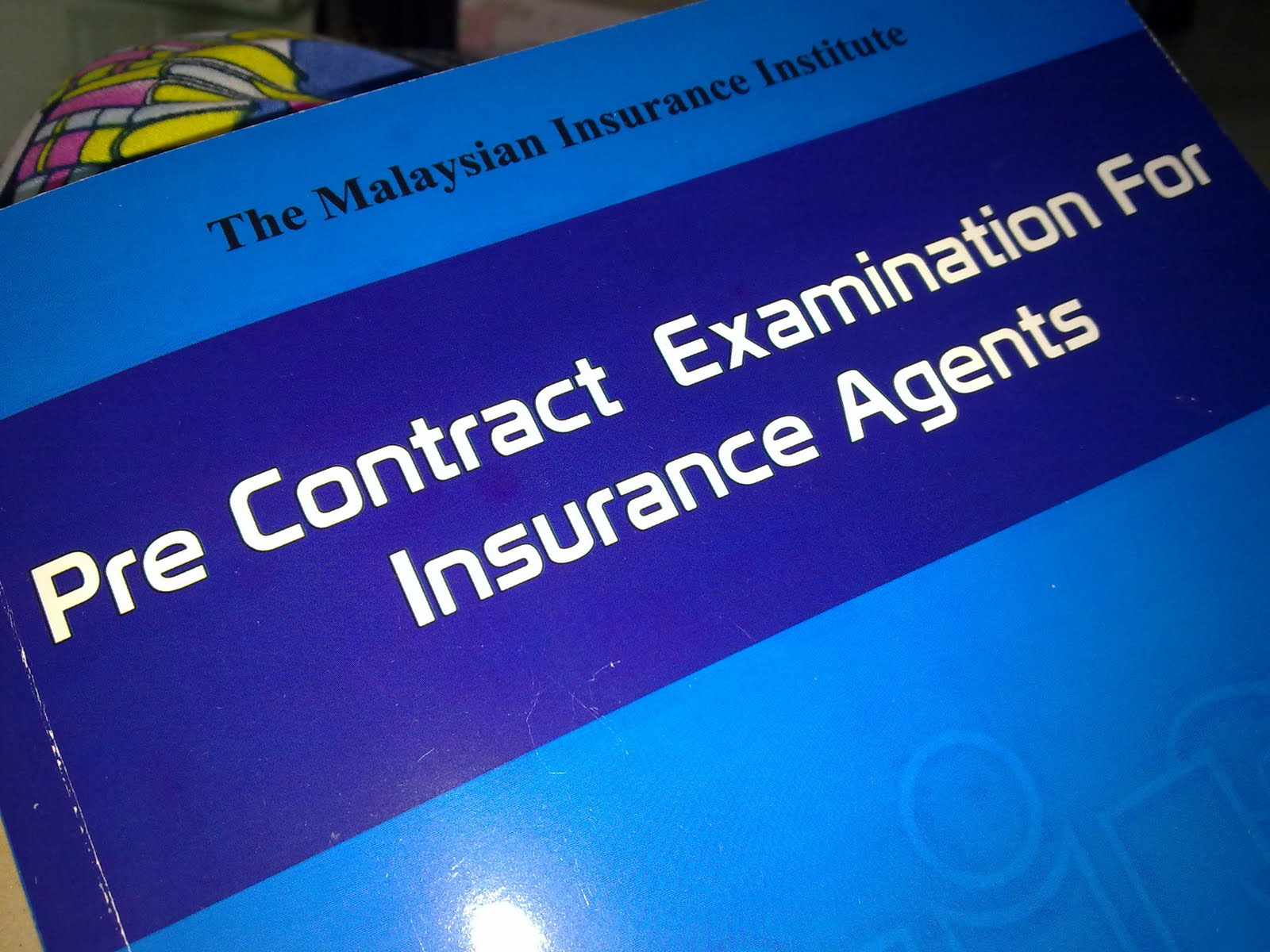
|
• A compulsory entry requirement for all those who intend to be registered as insurance agents
Syllabus details:- MEDICAL and HEALTH INSURANCE Withdrawal
If a certificate is defaced, lost or destroyed, it may be replaced upon a written declaration witnessed by a Commissioner for Oaths and stamped. The declaration is to be submitted to the Institute together with a certificate fee of RM15 (Ringgit Fifteen) before a new certificate can be issued. Every certificate issued or made by the Institute shall, not withstanding the payment of any fees and subscription, remain the property of the Institute and shall be returned by the recipient on demand thereof by the Institute. Examination Format and Structure
Language The examination will normally be conducted in Bahasa Malaysia, English, Mandarin and Tamil. Candidates may register for the examination in any one of the languages offered at each examination. Change of Examination Centres, Routes and Languages
Applicants seeking exemption should apply to MII in writing, submitting certified copies of relevent certificate(s) and other documentary evidence of qualification together with a processing fee of RM20.00 payable to the MII.
Breach of Examination Regulations The decisions of the Board and/or the empowered authority shall be final and binding. Liability of the Institute
Candidates must produce this Examination Entry Permit together with their identity card at the examination hall. Failure to do so will bar the candidate from the examination. Late Entry Examination
|
|||||||||||||||||||||||||||||||||||||||||||||||||||||||||||||||||||||||||||||||||||||||||||||||||||||||||||||||||||||||||||||||||||||||||||||||||||||||||||||||||||||||||||||||||||||||||||||||||||||||||||||||||||||||||||||||||||||||||||||||||||||||||||||||||||||||||||||||||||||||||||||||||||||||||||||||||||||||||||||||||||||||||||||||

No. 55, Jalan 3/93, Taman Miharja, Jalan Cheras,
55200 Kuala Lumpur, Malaysia.
General Fax: +603-9281 1435 / +603-9287 2855
Fellow Certified Life Practitioner (FCLP) Designation
LP101
Personal Insurance: Principles & Marketing
- Overview of Course: Financial Planning and Personal Insurance
- Concepts and Purpose of Financial Planning, Life Insurance & Life Insurance Selling as a Career
- Life Insurance Industry, Organizations and the Changing Financial Landscape
- Overview of the Sales Cycle & Personal Traits of a Successful? Insurance-Based Financial Planner
- Prospecting & Targeting Marketing & Pre - approach & Life Insurance Products
- Approach & Life Insurance Law & First Interview & Savings and Investment & Fact-finding & Single Need and Total Needs Approach
- Analyzing the Case & Methods of Analysis
- Presentation/Closing & Effective Closing Techniques
- Underwriting the Case & Information Technology and the Agent
- Unit Trust, Investment of Life Insurance Companies and Investment Products & Integrated Sales System and Hall marks of Professionalism of a Financial Services Professional
Durations = Moderating based – 15 weekly sessions of 2.5 hours each
LP102
Business Insurance: Principles & Marketing
- Introduction to Business Insurance as a Financial Planning Tool for Financial Services Professionals
- Overview of Business Organizations
- Developing Your Business Insurance Market
- Sole Proprietorship & Pre-approaching Business Prospects
- Partnership & Approaching Business Prospects
- Companies & the First Interview
- Business Continuation
- Liquidation of Businesses & Business fact-finding
- Liquidation of Business & Analyzing Business Cases
- Buy-Sell Insurance, Presentation and Closing Skills
- Key man Insurance & Group Insurance Schemes, Payroll Deduction? Plans & Underwriting Business Insurance Cases
- Analyzing Financial Statements and Post-Sales Service
- Approved Retirement Schemes and Tax Planning for the Business Prospects & Strategy for the Business Market
Durations = Moderating based – 15 weekly sessions of 2.5 hours each
LP103
Associated Legal Principles in Life Insurance
- The Legal System & Law of Contract
- Utmost Good Faith & Insurable Interest
- Payment of Policy Moneys
- Life Insurance and Trusts
- Application of Life Insurance Trusts
- Assignments & Law of Agency
- Policy Conditions and the 1996 Act
- Understanding the Insurance Act 1996
- Legal Issues Affecting Title
Durations = Lecture based – 4 full days of 6.5 hours per day
LP104
Business Risk & Continuation Planning
- Business Succession Planning for SME Owners
- Business Liquidation and Succession Planning
- The Succession Planning Process
- Closely-held Small and Medium-Sized Enterprises (SME)
- Important Qualitative Characteristics of SME that Require Planning
- Disadvantages of SME
- The Succession Problems of Each Type of SME Business
- The Financial and Legal Consequences When a SME Owner Dies
- Retirement, Disability and Critical Illness Business Buyout Arrangements
- The Insured Buy-Sell Agreement as a Solution to SME Succession Problems
- Business Valuation for SME Businesses
- Business Succession Case Studies
Durations = Lecture based – 4 full days of 6.5 hours per day
Chartered Agency & Practice Manager (ChAPM) Designation
Module 301 General Management Principles & Practices
Module 302 Agency & Practice Management
Module 303 Commercial Law & Financial Advisory Regulations
Module 304 Corporate Governance & Directors Duties
Module 305 CRM in Financial Advisory Business
Module 301
General Management Principles & Practices
- General Management Skills
- The Job Of The Manager
- The Manager & The Organization
- Delegation For Results
- Motivation To Higher Productivity
- Effective Communication
- Selection Of Quality Staff
- Appraisal Performance
- Training For Improvement & Counseling For Results
Module 302
Agency & Practice Management
- The front life of Life insurance/Financial Planning Practice
- Insurance sector and Agency Management
- Business Orientation in Life Insurance & Financial Services
- Financial Sense and response
- Leadership & Team Building
- The Job of Sales Manager
Module 303
Commercial Law & Financial Advisory Regulations
- The Malaysian Legal System
- Law of Contract
- Agency Law and Partnership
- Financial Services & The Law
Module 304
Corporate Governance & Directors Duties
- Corporate Governance in Malaysia
- Corporate Governance Defined
- History of Company Laws and Practices
- Interest in Corporate Governance & Corporate Governance
- Provisions for Corporate Governance in Companies Act, 1965
- Effective Audit Committee
- Malaysian Institute of Corporate Governance (MICG)
- Malaysian Code on Corporate Governance
- Minority Shareholders Watchdog group (MSWG)
Module 305
CRM in Financial Advisory Business
- Relationship Dynamics Roles in the Financial Advisory Business
- Terminologies in:-
- Financial Advisory Business
- Investment Advisory Business
- Financial Planning Business
- Customer Relationship Management
- Understanding the "Know Your client” rule
Chartered Investment & Finance Practitioner (ChIFP) Designation
IF401 Valuation of Securities & Fundamental Analysis
IF402 Portfolio & Fund Management
IF403 Managerial Finance & Investment Planning
IF404 Regulatory Controls on Investment Advisors
IF401
Valuation of Securities & Fundamental Analysis
Objectives
- The importance and relevance of financial statements in financial and investment analysis
- Brief introduction on how accounting standards and policies are generated in Malaysia. The regulatory bodies that affect accounting rules and presentation to the public in respect of contents and timing of releases are recognized
- The role of external outlook in international market, domestic economic market, industrial sector business life cycle, market share, goodwill and managerial skills in are studied in addition to financial statement analysis
- Discuss the limitations of the use of financial statements and related important accounting issues when interpreting financial statements for informed investment decision making
- Definition and valuation of fixed income and equity securities. Concepts of time value of money in pricing and the valuation of securities. Application of the concepts in financial and investment planning
IF402
Portfolio & Fund Management
The major learning objectives are listed below. Upon completion, participants are expected to be able to perform the following:
- Briefly describe a range of investment concepts which are commonly used by most fund managers
- Possess the ability to communicate the financial planning approach necessary to meet the financial goals of their clients
- Present and outline portfolio management process adopted by institutional investors
- Define and describe the major asset classes and their specific features in meeting Investment objectives
- Have a reasonably good grasp on basic portfolio theory principles. Understand the concept of risk management and the trade-off between risk and return in funds management
- Indentify the investment strategies available to fund management with respect to management of equities portfolio, debt portfolio, property portfolio, portfolio of international assets and portfolio of non-traditional assets
- Describe the principles of measuring and evaluating fund managers’ performance.
- The established criteria for selection of fund managers are outlined
IF403
Managerial Finance & Investment Planning
Objectives
- Introduction to financial markets and the investment environment in Malaysia
- Brief introduction of economic fundamentals and the impact of their changes on investment.
- Outline the inter-relationship amongst corporate finance, investment and strategic management
- Application of financial statement analysis in selection of securities and derivatives products.
- Concept and computation of EVA and its implication in investment decision with the objective of maximizing shareholders’ wealth
- Understand the application of time value of money and opportunity cost of capital in investment decision
- Measurement of risk and returns and their implication in portfolio selection
- Description on the process of portfolio management and usage of various benchmarks in evaluation of performance of funds managers
IF404
Regulatory Controls on Investment Advisors
Objectives
- Define the basic concepts and the principles of contract law and relevant issues
- Outline the application of Malaysian laws in the investment advisory services
- Describe the licensing requirements of investment advisers and investment representatives in Malaysia
- Specify the guidelines, characteristics and prohibitions of investment advisory activities
- Comprehension of the policies, guidelines and regulations governing issuance and offer of securities by Securities Commission
- Understand the characteristics and regulations with respect to acquisitions and takeovers in Malaysia
- Illustrate the guidelines and the regulations governing asset valuations by corporations for consideration by Securities Commission
Fellow Chartered Financial Practitioner (FChFP) Designation - Conversion Programme
Module Corporate Finance
Module Practice Management
Module : Corporate Finance
- The Role and Environment of Managerial Finance
- Risk and return
- Interest Rates and Bond Valuation
- Stock Valuation
- Capital Budgeting Techniques
- The Cost of Capital
- Leverage and Capital Structure
- Working Capital and Current Assets Management
Module : Practice Management
- The Frontier of Financial Planning Practice
- The Profession of Financial Planning
- Building the In-House Team and Forming
- The Organizational Structure of a Financial Planning Practice
- Composing the Practice’s Business Plan
- Marketing the Practice
- Client Building Strategies
- What is CRM?
- Setting Customer-Centered Strategies
How to Choose a Financial Planner
Choosing a financial planner may be one of the most important decisions you make for yourself and your loved ones. Financial planners can provide you and your family with guidance over your lifetime, or work with you to address specific concerns as needed. Whether you are struggling to manage your household finances more effectively, save for your children college education, or provide for your retirement, you may benefit from the services of a financial planner.Regardless of how you choose to work together, a planner can play a central role in helping you meet your life goals and achieve financial well-being. Consequently, take the time to select a financial planner who is competent and trustworthy, one on whom you can depend for professional advice and services.
Generally, financial planners have broad knowledge in such areas as insurance planning, investment planning, retirement planning and education planning. They also can possess a wide variety of designations, such as Certified Financial Planner (CFP).
Effective January 5, 2004, all financial planners in Malaysia are required by the Securities Commission to be licensed, and must have the recognised qualifications - Certified Financial Planner (CFP) being one of them.
The key to selecting the right financial planner is to consider their experience and credentials.
Certified Financial Planner (CFP)
Mark of QualityCFP practitioners have taken the extra step to demonstrate their professionalism by voluntarily submitting to the rigorous CFP certification process. In addition to significant education and experience requirements, they must pass a comprehensive exam that tests their personal financial planning knowledge and skills, continually update their abilities and abide by CFP Board's Code of Ethics and Professional Responsibility (Code of Ethics) and Financial Planning Practice Standards (Practice Standards).
When you work with a CFP practitioner, you are the focus of the financial planning relationship and your needs drive the financial planner's recommendations. As a client, you can choose from a wide variety of planners and planning services.
Tested For Competency
When selecting a financial planner, you need to feel confident that the person you choose to help you plan for your future is competent and ethical. To earn the right to use the CFP marks, individuals must complete the following competency requirements.
Education
Develop theoretical and practical financial planning knowledge by completing a comprehensive course of study at an approved college offering a financial planning curriculum developed by CFP Board of Standard in collaboration with Financial Planning Association of Malaysia (FPAM).
Examination
Pass a comprehensive CFP Certification Examination that tests their ability to apply financial planning knowledge in an integrated format. Based on regularly updated research of what financial planners do, CFP Board's exam covers the financial planning process, tax planning, employee benefits and retirement planning, estate planning, investment management and insurance.
Experience
Have a minimum of three years of experience in the financial planning process prior to earning the right to use the CFP marks. As a result, CFP practitioners possess financial counseling skills in addition to financial planning knowledge.
Committed to Ethical Conduct
Ethics
As a final step to certification, CFP practitioners agree to abide by a strict code of professional conduct, known as CFP Board's Code of Ethics and Professional Responsibility, that sets forth their ethical responsibilities to the public, to clients and to employers.
Through the Code of Ethics, CFP practitioners agree to act fairly and diligently when providing you with financial planning advice and services, always putting your interests first. The Code of Ethics states that CFP practitioners are to act with integrity, offering you professional services that are objective and based on your needs. They are required to provide you with information about their sources of compensation and conflicts of interest in writing, and must keep personal details obtained while working with you confidential.
Re-Certified Every Two Years
Once certified, CFP practitioners are required to maintain technical competence and fulfill ethical obligations. Every two years, they must complete a minimum of 30 hours of continuing education, staying current with developments in the financial planning profession to better serve their clients. Two of these hours are spent studying or discussing CFP Board's Code of Ethics or Practice Standards.
In addition to the biennial continuing education requirement, all CFP practitioners voluntarily disclose any public, civil, criminal or disciplinary actions that may have been taken against them during the past two years as part of the re-certification process.
Questions to Ask When Choosing a Financial Planner
The questions below can help you to effectively interview and evaluate financial planners to find the one that's right for you. You want to select a competent, qualified professional with whom you feel comfortable - one whose business style suits your particular financial planning needs.
Experience
Find out how long the financial planner has been practicing and the number and types of companies with which he/she has been associated. Ask the planner to describe past work experience and how it relates to his/her current financial planning practice. Choose a financial planner who has at least three years' experience providing financial planning services.
Qualifications
Ask the planner what qualifies him/her to offer financial planning advice and whether he/she holds a financial planning designation, such as CFP. Look for a planner who has proven experience in financial planning topics such as insurance, tax planning, investments, estate planning, and retirement planning.
Services
The services offered by a financial planner depend on a number of factors including credentials, licenses, and areas of expertise. Financial planners must be licensed to sell insurance or unit trust products. Some planners offer financial planning advice on a range of topics but do not sell financial products. Others may specialize in a particular area such as retirement planning or risk management.
Approach
Ask the financial planner about the types of clients with whom he/she has worked and the financial situations with which he/she is familiar. Some planners prefer to develop one plan that takes into account all of your financial goals. Others provide advice on specific areas, as needed. Make sure the planner's viewpoint on investing is not too cautious or overly aggressive for you. Find out if the planner will implement the financial recommendations developed for you or refer you to other financial professionals or specialists.
A Matter of Trust
Finding the right professional to address your financial planning needs isn't always easy. Take your time when choosing a financial planner. Before making a decision, become familiar with the planner's business style and understand the level of services he or she provides. Look for a measure of the planner's commitment to ethical behavior and adherence to high professional standards. Most importantly, look for a financial planner who will put you and your needs at the center of every financial planning engagement.
NEW CONTINUING PROFESSIONAL DEVELOPMENT (CPD) GUIDELINES FOR REGISTERED FINANCIAL PLANNER (RFP) COURSE
The RFP course is now recognized by both Bank Negara Malaysia for licensing of Financial Advisers and Securities Commission for licensing of Investment Advisers (which carries the title "financial planners").
In recognising the importance of the RFP designation to upgrade professionalism of life insurance agents as well as to promote the development of the financial planning industry, LIAM will now accord greater significance of the RFP course for the CPD hours. In addition, this is also to encourage life insurance agents to pursue the full RFP qualification.
As such, with effect from 1 January 2005, the CPD hours for the RFP course would be revised as follows:
Compulsory CPD Training Course
1. With effect from 1 January 2005, Module 1 (M1) and Module 2 (M2) of the RFP programme shall be made compulsory as one of the training courses for compliance of the CPD training hours.
2. An agent/agency manager shall be required to fulfill M1 and M2 only once in his entire career in life insurance selling. For instance, if the agent/ agency manager has fulfilled M1 and M2 for CPD in the previous life insurance company and he subsequently joins a new life insurance company, he will not be required to attend M1 and M2 again for CPD compliance. However, he/she should fulfill the CPD hours through other courses.
Earning of CPD hours for online RFP Modules
1. View the online training, then take the test to qualify for CPD hours.
2. You can try the test as many times until you are satisfied during your active subscription period. We will only submit your results for CPD entitlement at the end of every month. All submission of results will be based on the latest grade you achieve.
3. You are required to achieve at least 60% (Total Content Accessed) and 40% and above (Total Highest Score) to pass for your CPD hours
Note : A total of 15 CPD points will be awarded in the completion of each course (Module 1 or Module 2)
|
The CFP Board of Standards, Denver, is a non-profit professional regulatory organization founded in 1985 to benefit the public by fostering professional standards in personal financial planning. Individuals who meet rigorous certification requirements are licensed by the CFP Board to use its federally registered trademarks CFP® and Certified Financial Planner®. Your Career As a CFP Practitioner Personal financial planners help individuals determine whether and how they can meet their life goals through proper management of their financial resources. In addition to the opportunity for a rewarding career, you will have the satisfaction of helping people from all walks of life resolve their financial issues and reach their financial goals. |
The CFP designation identifies individuals who have both the academic and professional training. CFP licensees are qualified to provide advice with regard to all aspects of financial planning and to write comprehensive financial plans that meet international standards. Financial planners who are CFP licensees are highly sought after for their advice, as the credential assures the public that CFP licensees have agreed to adhere to high standards of competence and ethical practice. The strength of the CFP designation lies in the fact that it is a broad- based qualification, independent of any one industry and, therefore, are acknowledged to be objective professionals. Individuals who wish to attain the CFP designation must meet all the 4Es of the certification requirements, namely.
| Education | Successful completion of an approved education program |
| Examination | Successful completion of all FPAM required examinations |
| Experience | A minimum of 3 years work experience in financial planning or related fields |
| Ethics | Adherence to a professional Code of Ethics and Practice Standards as stipulated for all FPAM members |
With effect from 1 July 2002, members can select any of the 3 options to complete the CFP™ certification course.
Option A - CFP™ certification course
Members with SPM qualification or equivalent are required to sit for the whole CFP certification course, which comprise Module 1 to 6.
Option B - Partial exemption on Modules
The Board recognizes that certain professional qualifications cover some of the components in financial planning and have decided to waive certain Modules for eligible members.
Option C - CFP challenge status
The Board has approved certain qualifications and/or professional credentials as fulfilling the education requirements and members who are eligible can apply to FPAM for approval under the CFP challenge status. Under this CFP challenge status, the approved member is only required to sit for Module 6.
Members without any relevant qualifications are required to sit for the whole CFP certification course, which comprise Module 1 to 6.
The Board recognizes that certain professional qualifications cover some of the components in financial planning and have decided to waive certain Modules for eligible members. Holders of these degrees and /or credentials are exempted from the following modules:
| Qualifications |
Modules |
|||||
|
M1 |
M2 |
M3 |
M4 |
M5 |
M6 |
|
| Chartered Financial Practitioners (Namlifa) |
X |
|||||
| MII Dip. In Financial Planning |
X |
|||||
| Chartered Life Underwriters |
X |
X |
||||
| Life Underwriters Training Council of Fellows |
X |
X |
||||
| Graduate Diploma in Applied Finance and Investment |
X |
X |
||||
| Member of Malaysian Institute of Taxation |
X |
|||||
| Bachelors Degree (Finance / Accounting/ Economics) |
X |
|||||
Members having the following qualifications and/or professional credentials and have gained 3 years of personal finance related experience are eligible to apply for the CFP challenge status. This CFP challenge status is only open to Malaysians.
(1) Qualifications
Professional accountants (MIA, CPA(M), CPA(Aust), AICPA, CA , ACCA, ICMA & AIA.)
Chartered Secretaries (ACIS / FCIS)
Company Secretaries (Fellow of MACS)
Chartered Financial Consultants (ChFC)
Chartered Financial Analysts (CFA)
Doctorate in Business Admin (DBA)
PhD (Business, Accounting or Economics)
Masters (Business Admin /Finance /Economics/Accounting) from accredited universities
(2) Members must have gained 3 years of personal finance related experiences at the time of application where such experiences gained can enhance the candidate's ability to apply the financial planning process to meet consumer needs. This experience can be gained in one or all of the following areas: Insurance, mutual funds, securities, asset management, accounting, estate planning, banking, taxation, trusts, retirement planning and financial planning.
(3) Each member is entitled to a maximum of 3 consecutive examination attempts only for the challenge status commencing immediately after obtaining approval from FPAM. After the 3 attempts or non-attempts, they must enroll for the normal CFP certification examinations.
|
|||||||||||||||
|
|||||||||||||||
|
|||||||||||||||
|
|||||||||||||||
|
Malaysia Life insurance company offers an innovative range of financial products to meet different customer needs. Malaysia insurers have innovative range of financial protection and wealth management products and services are available through the Malaysia Life Insurance Agency force, selected financial services organizations as well as financial advisor practices.
The product portfolio covers a broad range of needs, which include:
- Life Protection
- Retirement Planning
- Education Planning
- Savings & Investment
- Health & Medical
- Income Protection
Life insurance is a contract between an individual and a life insurance company. The individual agrees to pay a premium and in return, the insurance company promises to pay a predetermined amount of money to:
- The insured, in the event he or she becomes disabled or when some specified event takes place, and/or;
- A beneficiary or beneficiaries if the insured dies.
In order for the insurer to have enough money available to pay death benefits when they become due, insurance companies use a pricing system known as the legal reserve system. This system is based upon several premises:
- The amount of the death benefit promised in the insurance policy should be calculable in advance of the insured's death;
- The money needed to pay the benefits should be collected in advance, so that funds will be available to pay claims and expenses as they occur;
- The premium an individual pays for an insurance policy should be directly related to the amount of risk the insurer assumes for that person.
2. Can you provide a short history of life insurance in Malaysia?
Records indicated that the first life insurance policy was written in 16th century England.
The insurance industry in Malaysia first started in the 18th century. The insurance industry then was based on the British system because it was introduced and managed by British trading companies and agencies. There were few locals involved due to lack of expertise.
The insurance industry really took off only in the 1950s. The market then was controlled by British and American firms. At the same time, locally incorporated companies had also started selling insurance. After independence in 1957, nationalistic policies gave much encouragement to domestic companies to improve their market share. However, this boom burst when many companies, without proper underwriting practices, went out of business leaving their policyowners holding worthless policies.
The government stepped in to remedy the situation by introducing the Insurance Act, 1963. The office of the Director General of Insurance was given the task of regulating the insurance industry. Today, the Governor of Bank Negara is also the Director General of Insurance.
There are at present 9 Takaful and 16 life insurers operating in Malaysia.
Of the 16 domestic life insurers, 3 are listed on the Bursa Malaysia, one of which is Manulife Insurance Berhad, which is sponsoring this FAQ.
3. Why do people buy life insurance?
The reasons are:
- It provides a guaranteed source of income in the event of a wage earner's sudden death, to pay for funeral and final expenses, unpaid bills, taxes and other financial obligations e.g. our Convertible Term Plan.
- It safeguards a family's present standard of living, preventing its sudden drop after the death of the breadwinner e.g. our Competitive Whole Life Plan.
- It provides a convenient, disciplined way for a family to set money aside on a regular basis to ensure they will have the financial means necessary to pay for their children's university education e.g. our EduLink.
- It offers a safe, reliable savings plan for future goals and opportunities.
- It furnishes an important income supplement when earning power is destroyed by an illness or accident, as well as the means to pay for unexpected medical expenses e.g. our Comprehensive Medilife Riders and Lady's Comprehensive Medilife Riders.
- It protects home mortgage payments against an untimely death e.g.our Convertible Term Plan.
- It makes up an important part of a fringe benefits package provided to staff members by an employer e.g. our key employees and protection solution.
- Life insurance has often been described as "a friend in time of need". Essentially, it is a safety net for those times when financial hardship is created by an unforseen emergency or when regular income is lost.
4. What are the basic types of life insurance?
There are four basic types of life insurance policies. They are
- Term Insurance
- Whole Life Insurance
- Endowment Insurance
- Investment-Linked Insurance
All policies sold by life insurers in Malaysia are a variation and/or combination of these 4 basic types.
A fifth type of life insurance is Family Takaful. At present, only nine companies, empowered by the Takaful Act 1984, Syarikat Takaful Malaysia Bhd, Etiqa Takaful Bhd, Takaful Ikhlas Sdn Bhd, Takaful Nasional Sdn Bhd, MAA Takaful Bhd, Prudential BSN Takaful Bhd, HSBC Amanah Takaful (Malaysia) Sdn Bhd, Hong Leong Takaful Bhd, Tokco Marine and Commerce Aviva Takaful Bhd are selling this type of life insurance.
Annuities are the opposite of life insurance because the annuitant will receive the policy benefits provided he is living.
Superannuation is also offered by some insurers.
5. Where or from whom can I buy life insurance?
And if you had to know about the alternative channels, they are:
- Ordinary life insurance agents.
- Home Service or industrial life insurance agents.
- Some of the credit card companies like AMEX and some of the banks sell life insurance by mass mailing to their charge, credit card and bank accountholders.
- Bancassurance, which is selling of insurance through a bank's established distribution channels.
- In theory, a Malaysian insurance broker will also procure life insurance for its clients but brokers are relatively inactive with respect to life insurance in Malaysia.
- Some companies buy group insurance directly from life insurers or indirectly through insurance brokers and offer it as a form of benefits to their employees.
- In theory, you can walk into a life insurance company and ask to buy a life insurance policy. But why not go through an agent? His valuable service will not cost you anything.
Home Service life insurance agents differ from ordinary life insurance agents in the area of premium collection. A Home Service agent will visit his customers every month to collect premium.
Except for the first premium, customers of ordinary life insurance agents, are expected to pay direct to the insurers. However, some ordinary life insurance agents also offer the collection service.
All of the life insurers and many life insurance agents and brokers are listed in the Yellow Pages.
6. Is it legal to buy life insurance from a foreign life insurer?
It is perfectly legal to buy life insurance from one of the four foreign constituted life insurers that are registered under the Insurance Act to transact life insurance business in Malaysia.
However if the foreign insurers are not registered under the Insurance Act of 1963, then they are prohibited from selling life insurance in Malaysia. Furthermore, the same Act states that no person shall carry on insurance business in Malaysia as an insurance agent for an insurer not entitled under this Act. The same prohibition applies to brokers.
Thus, it stands to argue that if you buy insurance from an agent of a foreign insurer, you may be accused of aiding him or her in breaking the law. Bank Negara has been investigating such agents to protect Malaysians from the risks involved in dealing with non-registered companies.
7. What is the Consumer Education Program?
The Consumer Education Programme (CEP) on insurance and takaful is known as InsuranceInfo and is a joint effort between Bank Negara Malaysia and the insurance and takaful industry. The InsuranceInfo is designed as a long-term programme to provide educational information to enable consumers to make well-informed decisions when purchasing insurance or takaful products.
Click here for InsuranceInfo.
8. What bodies are playing a significant role in the life insurance industry in Malaysia?
They are :
|
a. |
Director General of Insurance This office is set up under the Insurance Act of 1963 to regulate and supervise the life insurance industry in Malaysia . At present, the director general of insurance is also the governor of Bank Negara. Thus, we often use the term Bank Negara and director general of insurance interchangeably. |
Bank Negara Malaysia |
03-2098 8044 |
| b. |
Life Insurance Association of Malaysia (LIAM) |
4, Lorong Medan Tuanku Satu, Medan Tuanku, |
03-2691 6168 |
| c. |
National Association of Malaysian Life Insurance & Financial Advisors (NAMLIFA) |
Wisma NAMLIFA, |
03-9281 3167 |
| d. |
National Insurance Association of Malaysia (NIAM) |
NIAM Secretariat |
03-2692 40 |
| e. |
Actuarial Society of Malaysia (ASM) |
c/o Actuarial Dept, Great Eastern Life Assurance (Malaysia) Berhad Level 20, Menara Great Eastern 303, Jalan Ampang 50450 Kuala Lumpur |
03-4259 8024 |
| f. | Malaysian Insurance Institute (MII) This is a non-profit organisation that conducts courses for the staff and agents of the insurance industry. |
5 Jalan Sri Semantan Satu, |
03-2094 4234 |
| g. |
Kesatuan Agen-Agen Melayu (JAMIN) |
Suite 9C , 9 th Floor, |
03-2146 9083 |
9. If I have just signed a proposal form, when does my coverage begin?
The answer to this question is complicated.
If you have only submitted a life insurance proposal or application form, then you are not covered at all.
If you have submitted payment together with your proposal form, then the life insurer is liable to the extent specified in the receipt. Usually the receipt will specify the insurer's liability as a maximum sum or your proposed sum insured, whichever is smaller, for a certain maximum period.
Most of the insurers intend their full liability (which is your proposed sum insured unless they counter propose) to start from the latest of the following four dates:
- Date of receipt of application or proposal form by the insurer.
- Date of receipt of full payment for 1st premium.
- Date of receipt of last compulsory underwriting document.
- Policy date stated in insurance policy.
Common sense may suggest that date of coverage will start with the policy date stated in the policy. However, in practice, some policyowners prefer to back date their policy so that the premium is calculated based on the lower age. This results in a lower premium at the expense of being not covered for the backdated period.
10. What can I do to minimize my life insurance policy premium?
There are several options. They are:
- Buy the policy as early as possible. The premium amount is usually dependent on the age of the insured, rising together with the age of the insured.
- Depending on your age and chosen policy plan, there is an upper limit on your proposed sum insured beyond which you are required to undergo a medical examination. It is possible that the medical examination may uncover factors which will make you ineligible for preferred risk discounts or even worse incur a higher than normal premium amount. Subject to the condition that you are not currently aware of any such medical condition, you should first purchase all the life insurance that you may require just up to the sum insured limit for no medical examination. After that, if you still require further insurance, by all means, go for the medical examination and purchase the additional coverage. The findings of such subsequent medical examination will have no bearing on the premium of the first policy provided that you are not aware of these findings prior to applying for the first policy.
Always answer the questions in the application form truthfully and completely to the best of your knowledge, even if the truth may cause the premium to be higher. Insurance contracts are based on the doctrine of utmost good faith. In the event of a claim, if the claims manager discovers that you have withheld information material to the claim, your policy can be invalidated and your beneficiaries may receive nothing. A policy that returns nothing is infinitely more expensive than a rated up policy.
- In general, term insurance which offers only protection is the cheapest. Whole life insurance which offers a mix of protection and savings is middling in cost, while endowment insurance offers maximum savings at a higher cost. Try to buy according to your needs and what your wallet can bear. Nothing is more expensive than a policy that you buy and abandon after a few years.
- If you are in good health, it is better to buy one large policy than several smaller policies. You will save by paying stamp duty only once and enjoying the size discount. Normally, insurance companies offer a discount on your premiums if your sum insured exceeds a certain amount. For instance, our Whole Life Special offer size discounts when your sum insured exceeds RM20,000. Thus your cost per RM1,000 of sum insured is reduced.
- Some companies offer policies that cover all members of your family. Such policies may be 30% to 100% cheaper than if you were to cover each member individually.
- If you are buying for the purpose of saving for a child's education, buy a plan insuring that child timed to mature at the time when the money is needed or that can gives you the flexibility to withdraw a lump sum of money when needed. Add a payor income rider insuring your life so that, in the event of your death, a regular income is payable to help keep the policy in force. Thus, your child is assured of a tidy sum when he or she needs it for education.
Malaysia insurer offers an education plan known as EduPlan. The premium on such education policies will be deductible against your taxable income up to a maximum of RM 3,000, subject to final approval by Inland Revenue Board.
- Many life insurers allow their policyowners to pay premium in advance by placing such advance premium in a special account that will earn interest until premium payment is due. Check with your insurer on the interest rate that they offer. You may be pleasantly surprised! However, please note that the rate is no more guaranteed than your savings account interest rate.
11. Is my life insurance policy premium tax deductible?
Section 49 of the Income Tax Act, 1967 allows some relief for premiums paid on life insurance policies or deferred annuities.
The premium is allowable when the life insurance or deferred annuity is on the
- Individual's life
- Spouse of the individual
- Her husband and any other wife or wives
Now, the relief from premiums on the life of the individual or his wife for one contract is restricted to the lower of the premiums paid or 7% of the capital sum insured. However, as of year of assessment 1997, this 7% restriction no longer applies.
The total relief allowable for all insurance premiums and contributions to approved funds (such as EPF) in the same basis year is RM 6,000. Married couples are entitled to separate relief of RM 5,000 each if the wife opts for separate assessment.
In addition to the above relief, an additional relief up to a maximum of RM 3,000 is given to a resident individual for premium paid for education or medical insurance. This is extended to premium paid for insurance on education or for medical benefits contracted for or by an individual for himself/herself, his/her spouse or child. In the case of separate assessment, the wife is also given a relief of up to a maximum of RM 3,000. Our EduPlan and ManuCare100 policy will qualify for this additional tax relief.
For taxable income for the year of assessment 2004 (Current year basis), the proposed tax relief for individuals has been increased to the following:
- Personal relief increased from RM5,000 to RM6,000
In the case of an employer purchasing life policies for his employees, the premium paid is usually treated as an allowable deduction (for the employer).
12. Are proceeds from my life insurance policy taxable?
Currently, the proceeds of a personal life insurance policy do not come under the definition of income under the Act, and hence, no income tax needs to be paid on the proceeds. The same applies to policy dividends and reversionary bonuses as these items are considered as refunds of premium, and additions to capital sum insured respectively.
From the 1995 year of assessment onward, the proceeds of annuity contracts are also not treated as taxable income.
13. Why did my insurance agent advise me to create a S23 trust?
S23 refers to Section 23 of the Civil Law Act. This section of the Act states that a policy of assurance set up by any person on his/her life for the benefit of his/her spouse or children or both will be considered a trust in favour of the beneficiaries. Thus, the policy benefits shall not form part of the estate of the insured or be subjected to his/her debts. Please note that this type of trust is effective only if the beneficiaries are his/her spouse and/or children. Thus, the beneficiaries are guaranteed to receive the benefits, free of any claims from creditors of the policyowner.
14. What are the common reasons for a life insurer to refuse a claim?
For death claims, the common reasons are:
- The policyowner's or insured's failure to disclose material facts with intention to defraud the insurer. The keyword here is material. If the insured died of a heart attack and he/she was known to suffer from heart problems prior to applying for the policy and yet did not disclose this information in the proposal form, then the insurer is likely to deny the claim. On the other hand, if the insured died of an accident entirely unrelated to his heart problems, then the insurer is likely to pay even if the heart problems were not disclosed in the proposal form provided that the heart condition was not so severe that the insurer would have rejected the application had the insurer knew.
- Policy lapsing before the insured died. Malaysian life insurers usually offer a grace period of 30 days for premium payment. If insured died on the 31st day after the premium is due, then his/her policy will have lapsed and no claim will be payable.
- It has been ruled that it is the duty of the policyowner to pay his premium on time.
- The insured died as a result of suicide within a fixed period of time from date of commencement of the policy. In such an event, the insurer is not liable to pay the claim except to refund the premiums paid. In Malaysia, this fixed period ranges from 1 to 2 years depending on the insurer and the product.
For hospitalisation and surgical claims, the usual reasons for claims rejection are:
- Claiming on a non-covered event e.g. cosmetic surgery.
- There is usually a waiting period of 30 days before any claim is accepted. Without the waiting period, the number of claims would be much higher, resulting in a higher cost of claims. This would, in turn, lead to higher premiums, making such policies much less affordable.
- Excluded risks e.g. hospitalisation due to alcoholism or substance abuse.
- Claims arising from a pre-existing condition e.g. claims on an operation to treat a condition that the insured was already suffering from before taking up the policy.
For totally and permanently disability claims, a common reason for claims rejection is that the insured's conditions do not satisfy the definition of total and permanent disability.
Accidental death claims may also be rejected for deaths arising from suicide, alcoholism and substance abuse. Outside the suicide period, the basic plan will always pay, even for suicide. Of course the suicide clause does not apply to accident riders.
15. Should I replace my present life insurance policy with that seemingly cheaper and better policy?
This is about comparing two policies. Life insurers have packaged their products with myriad features and it is difficult to get two identical policies from different insurers. Furthermore, there are the intangibles like reliable service from the agent and the insurer, financial stability of insurer, etc.
In general, a policy that has been in force long enough to acquire cash value should not be surrendered for another policy. The drawbacks of surrendering a policy after it has been inforce for some time include:
- Immediate loss of protection for the insured
- Higher cost of purchasing a new policy as the insured is now older
- The three year period for the cash value build up will have to start again
- The suicide and incontestibility clauses will begin anew
It is therefore recommended that you confer with your agent before surrendering your policy. If your agent is no longer working for the same company, then you should check with the original company. They may assist you in working out an amicable solution.
16. What should I look for when I am shopping for a life insurance policy?
First, you must identify your needs and the amount of premium that you can afford. Your possible needs are protection and savings. Protection refers to your need to provide financially for your loved ones in the event of your untimely death. Savings refers to your need to accumulate funds for future use.
Just as you insured your car, your house or your business for their value, so should you insure your life for its value to your dependents. If you are married and have children, an amount of 5 to 10 times your annual income should be sufficient unless you have extra debts or obligations or business interests. A professional agent can properly assess your actual need for protection and savings and recommend the proper policy to meet your needs.
17. How late can I pay my premium?
You must pay your premium before the due date plus grace period stated in your policy. Most Malaysian insurers prescribe a grace period of 30 days or 1 month for most policies. However, please read your policy to determine the exact grace period.
If you die before the grace period expires, then you are still covered even if you have not paid your premium. If you die exactly on the date of grace period expiry, and premium has not been received before that date, then you are not covered.
If you are paying premium directly to an office of the insurer, you will normally be given an official receipt immediately. The receipt is normally adequate proof that you have paid your premium. This is provided that your payment is by cash or by cheque and the cheque is honoured by the bank.
Legally, if you are paying premiums through your ordinary life agent, then it depends on whether the agent has authority to collect premium. If he has, he usually can provide you with a temporary receipt immediately upon receiving the premium. Usually such authority is given to the agency supervisor and more senior agents. However, not withstanding this legal position, most insurers will recognise even payment to agents that are not given official authority to collect premium, provided that the agent admits receiving the premium or the policyowner can prove that he paid the premium to the agent.
Home Service agents are always given authority to collect premiums. Indeed, after collecting the premium, the Home Service agent will always acknowledge receiving the premium by signing the relevant pages of the premium receipt book held by the policyowner.
The above discussion on non-coverage is further subject to the provision that if, on the premium due date, the policy has been in force long enough to accumulate surrender value, then the policy remains automatically in force for a period equal to what the surrender value will buy. Furthermore, if the policy has accumulated any dividends or if the insurer is holding some money on behalf of the policyowner in respect of his/her policy, the insurer will usually use this money to keep the policy in force for as long as the money will cover.
For further details, please refer to the discussion on non-forfeiture options.
18. What are my options if I cannot continue paying my premium?
In life insurance jargon, these are known as non-forfeiture options or discontinuation benefits.
If you are unable to pay even one more sen, and if your policy has accumulated some surrender value, then your options are:
- Surrender your policy and you will receive the surrender value. Within your policy contract, there will be a table stating the surrender value for each policy year i.e. the complete number of years for which premium has been paid. If you have paid for a few more months, the insurer will usually interpolate between the two surrender values. The exact interpolation formula varies by insurer.
- To take a loan against the surrender value that your policy has accumulated instead of surrendering your policy for its surrender value. This way, you get your money and the policy is still in force provided that you have paid your premium.
- Surrender one or more of the riders or surrender some or all of the existing bonuses for their surrender value. This way, you are still covered under the basic plan.
- Convert to a reduced paid-up policy according to the amount of surrender value available. This means that your sum insured is reduced but you are still covered for the original period. You are not required to pay any further premium.
- Convert to an extended term insurance according to the amount of surrender value available. This means that your policy has now become a term policy with a sum insured equal to the original sum insured less any policy loans. The period of coverage depends on the amount of surrender value available. All of the original riders will be terminated. You are not required to pay any further premium.
- Exercise an Automatic Premium Loan. This means that on each premium due date, the life insurer will automatically make a policy loan equal to the premium due, and use it as your premium payment. This is often the basis of "vanishing premium" and "limited payment" policies. For such policies, their surrender value accumulates so fast that the insurer can use them to pay premium until the policy matures.
If you do nothing, the insurer will follow the non-forfeiture option that you chose in your application form. If you did not select any non-forfeiture option in your application, then the insurer will take the default non-forfeiture option stated in your policy contract. In Malaysia, this is often automatic premium loan. Our Insurance Act and the Director General of Insurance have not mandated any standard default non-forfeiture option. Also, please note that even for a given insurer, he may specify different default non-forfeiture options for different products and/or for contracts issued at different times.
19. What are "limited payment" or "vanishing premium" policies?
These are policies in which the premium paying term is less than the actual term of the policy. There are two such types of limited payment schemes. One is guaranteed and the other one is not guaranteed.
In "guaranteed" schemes, the insurer guarantees that you will have to pay premiums for no more than the stated period or until a stated date.
"Non-guaranteed" schemes are always for policies with profits or which are participating. In such schemes, the life insurer is saying that, based on the expected investment return, interest rate, etc., you can probably stop paying premium by the end of that calculated period or date. Under Bank Negara guidelines on sales illustrations, there is always a statement alerting the prospect to the non-guaranteed nature of this payment scheme. However, selling of insurance using this practice has been discontinued by Bank Negara Malaysia since April 2001.
Generally, all else being equal, the guaranteed policies are usually more expensive than the non-guaranteed ones. Normally, an insurer will do the utmost to achieve the projections given in the sales illustration as failure to do so may be disastrous to the company's new business growth, even though the insurer is not under any legal obligation to meet these projections. Of course, the guaranteed portion, if any, of the policies represents a legal commitment the insurer must meet.
Life Insurance Terminology
1. What does life insurance with or without profits mean?
Many life insurance companies offer whole life policy or an endowment policy "with profits". Sometimes, the with profits policy is a rider that is attached to the whole life or endowment policy.
A "with profits" policy is one where the policyowner shares in the profits that the company makes, and these are added to the benefit which is finally paid out. All else being equal, the premium payable will be more than that of a without profits policy. As you would have gathered by now, a without profits policy is one which does not share in the profits that the company makes.
2. What does participating or non-participating life insurance mean?
A participating life insurance policy (also called a with profits policy) is one which will participate in the distribution of surplus if the life insurance company's experience is favourable. Conversely, a non-participating policy cannot do so. Policyowner of a participating policy will pay a higher premium for a given sum insured than a non-participating policy because he/she will usually receive greater benefits.
Usually, the policyowner can elect to convert a non-participating policy into a participating one by payment of additional premium. The additional premium will commence from the anniversary date immediately following the date of conversion. The bonuses are granted only for the future period commencing from the date of such conversion.
However, policyowners are usually not allowed to convert a participating policy into a non-participating one. The rationale behind this is that all policyowners may want to convert their participating policies into non-participating ones when the company is undergoing a bad experience.
Sometimes, the participating policy is the rider attached to the basic policy plan (which is non-participating by itself). In this case, the rider can be attached at any time during the term of the basic policy plan subject to insurability.
3. With respect to life insurance, what is a bonus?
A bonus is a refund of excess premium paid to the policyholder of a participating policy. Such bonuses are paid out of the insurer's divisible surplus if the insurer's actual experience is favourable. These bonuses are usually deferred in that they are only payable at the end of the term of the policy, or when a claim arises. They cannot be withdrawn during the term of the policy; however, they do have a cash value (after a period of 3 full years, usually) and should the policy be surrendered, the cash value can be obtained.
4. What is a simple reversionary bonus?
A simple reversionary bonus is one that is calculated on a simple interest basis. At the end of each policy year, an annual bonus will be declared and this amount will earn interest for the remainder of the term of the policy. In this case, the interest on the bonuses that have been accumulated does not earn interest; only the principal amount earns interest.
5. What is a compound reversionary bonus?
A compound reversionary bonus is one that is determined on a compound interest basis. In this case, interest will be earned on the total of bonuses declared and accrued interest, i.e. both the bonuses declared and accrued interest will earn interest.
Bonuses on a compound interest basis accumulate at a faster rate than those on a simple interest basis.
6. What is a death or claims bonus?
A death bonus is one which is only payable on death. It is usually incorporated into a reversionary bonus rider to enhance the benefit payable on death. It is payable in addition to the sum of the annual bonuses which have been declared and vested at the time of death. However, if the insured survives until the maturity of the rider, the death bonus will not be payable. Some insurers will include the death bonus in the benefit payable for total and permanent disability claims.
The death bonus is usually only payable after the policy has been in force for a certain number of years. This is to allow the death bonus to accumulate to a significant amount. The rate is also dependent upon the company's financial condition at the time of claim.
7. What is a final, terminal or maturity bonus?
A final, terminal or maturity bonus is one which is payable at policy maturity. This bonus is payable in addition to the sum of the annual bonuses which are declared at the end of every year during the term of the policy. However, the final bonus is not payable on death or total and permanent disability.
The rate of final bonus will depend on the company's actual experience at the time of policy maturity.
8. What are guaranteed cash payments?
Guaranteed cash payments are cash payments which are paid at regular intervals during the term of the policy. This feature is usually found in permanent insurance plans such as whole life and endowment. The payments are guaranteed and are made as long as the insured is still alive.
As our country's health care system improves, the average person will live longer. Thus, such policies will become more expensive as the insureds live longer and thus collect more payments.
A good example of a policy with guaranteed cash payments is our Whole Life Special.
9. What are policy dividends?
Policy dividends are a refund of excess premium paid to the policyholder of a participating policy. Such dividends are paid out of the insurer's divisible surplus. In this case, the policyholder is given the right to participate in the distribution of surplus if the company's actual experience is sufficiently favorable. This distribution of surplus comes in the form of a policy dividend. The policy dividends can be kept with the insurer or withdrawn. If they are kept with the insurer, interest will be earned on the accumulated sum. The rate of interest is determined by the insurer.
10. What is policy cash value or surrender value?
Policy cash value or surrender value is the amount of money the policyholder will receive as a refund if the policyholder cancels the coverage and returns the policy to the company.
The cash value is only available for permanent insurances such as whole life and endowment. In these cases, the cash value is only available after the policy has been in force for three full years. This payment of cash value after a minimum period of three full years is guaranteed by law.
11. What is a policy loan?
A policy loan is one which is taken out on the security of the policy. It can only be taken out if the policy has a cash value. There is usually a cash value after the policy has been in force for three full years. Theoretically, the maximum loan value of a policy is 100% of the cash value. However, in practice, in order to prevent the sum of the loan value plus accrued interest from exceeding the cash value (causing the policy to lapse), the maximum loan value that will be taken out is 90% of the cash value.
The rate of interest charged on the loan will be determined by the company. An notice showing the outstanding balance and interest due will be issued to the policyowner at least twice a year until the loan is fully settled. The interest which is not paid within one month after it has become due or by end of the company's financial year will be accumulated at compound interest. There will be a minimum period for which the loan must run. This minimum period varies between companies, but in general, it is six months. If repayment of the loan is made before the minimum period is over, interest for at least the minimum period may be charged.
The life insurer does not insist on repayment of the loan as long as the policy is in force. At any time while the policy is in force, the whole or any part of the loan (together with accrued interest) may be repaid.
At the time of a claim, ie. settlement in the event of death or maturity of the policy, any loan together with the accrued interest shall be deducted from the amount otherwise payable under the policy.
If the policy is converted into paid-up or extended term insurance, the outstanding loan amount is deducted from the available cash value before it is used to purchase the paid-up or extended term insurance.
Policy loans should not be confused with study loans that some insurers offer as an additional benefit to their juvenile or children's policies. Such study loans are real loans similar to what you can get from the banks or finance companies. It is given only when there are suitable loan guarantors and the insured can show evidence of acceptance by the university. Like bank loans, such study loans must be repaid.
If there is sufficient cash value, a policyowner can always apply for a policy loan to finance the insured's (or anybody's) university education without resorting to a study loan.
The current interest rate charged by Malaysia insurer on policy loan is at 8% per annum. A RM5.00 stamp duty is imposed per RM1,000 of the loan amount.
12. What is a policy date?
Providing that there was no backdating, the policy date is the date of inception of the policy. This means that the coverage provided under the policy will commence at the policy date stated in the policy. The premium rate is calculated based on the age of insured nearest to this policy date or next birthday after this policy date, depending on individual insurer's practice.
Backdating refers to the practice in which the policyowner selects his last birthdate as the policy date so that the lower premium rate applies. However, in such a case, the insured is not covered during the backdated period. Usually, the applicant is allowed to backdate his policy up to a maximum of six months.
13. What is a policy anniversary date?
A policy anniversary date is the date this year when your policy will be an exact number of years from the policy date.
This date is important as your premium payment will be due on this date and some of your benefits may also be payable on this date.
14. What is a policy due date?
The policy due date (also known as premium due date) is the date at which a premium payment becomes due. Most insurance companies will allow a grace period of 30 or 31 days after a policy due date, within which the premium may be paid without penalty.
15. What is modal premium?
Modal premium is the premium that is payable on a premium due date. The frequency or mode of payment can be annual, half-yearly, quarterly, or monthly.
To determine the modal premium, an adjustment will be made to the annual premium by multiplying it by a factor taking into account that the entire year's premium is no longer received at the beginning of the policy year. Of course, if the frequency of payment is annual, modal premium will be equal to annual premium.
16. What is an annual premium?
An annual premium is the premium payable if the frequency of premium payment is annual. It is the practice of life insurers to quote premiums payable yearly in advance.
17. What is annualised premium?
Annualised premium is the total premiums (you can think of this as the sum of the modal premiums in a year) which are payable in a year if the mode of payment is not on an annual basis. For example, premiums could be paid half-yearly, quarterly, or monthly.
Except for annual mode policies, the annualised premium is always greater than the annual premium because of increased administrative cost. For annual mode policies, the annualised premium is always equal to the annual premium. Furthermore, the fact that the full (annual) premium is not held by the insurance company from the beginning of the year necessitates an additional charge.
Most of Malaysia life insurers state their annual new sales in terms of annualised premium.
18. Who is an insured?
An insured (or assured) is the person whose life is insured under the policy. The policy proceeds will be paid when the stated contingency affects the insured.
Normally, the insured is a single person. However, in joint life policies, there are two insureds, usually a husband and his wife. In family policies, the insureds are the entire family. In group policies, there are many insureds.
19. Who is a policyowner or policyholder?
A policyowner or policyholder is the person who has all the ownership rights of the policy. He or she is then allowed to
- Name and change the beneficiary (or beneficiaries) provided no trusts are involved
- Receive a policy loan
- Receive guaranteed cash payments or dividends
- Transfer the ownership rights to another person by assignment or endorsement
- Surrender the policy
- Convert the policy
- Change premium mode
- Change the correspondence address
- Add or drop riders
- Change the sum insured
- Reinstate the policy after it has lapsed
In contrast, the insured and the beneficiary, unless he is also the policyowner, possess no such rights.
20. Who is a policy payor?
A policy payor is the person who makes the premium payments. This term is usually used when the person making the premium payments is different from the insured. In most cases, this involves a juvenile policy in which the policy payor is the parent and the insured is the child.
In rare instances, the policy payor is neither the policyowner nor the insured. For instance, the father can be paying for a juvenile policy that his wife bought on their child's life.
Many Malaysia life insurers sell a payor rider that waives all premiums if the payor dies or becomes permanently disabled.
21. Who is a beneficiary?
A beneficiary is the person (or a legal entity) who is entitled to receive the policy proceeds. Sometimes there is more than one beneficiary. In this case, the policy proceeds will be divided, in the amounts determined by the policyholder as specified in the policy contract, between the beneficiaries.
22. Who is a contingent beneficiary?
A contingent beneficiary is the person (or party) designated to receive the policy proceeds if the insured person outlives the primary beneficiary (or one of the primary beneficiaries).
23. Who is an assignee?
An assignee is the party to whom all or certain rights are transferred under an absolute or conditional (sometimes called a collateral) assignment. This assignment is essentially a transfer of legal rights under a life insurance policy. If it is absolute, all the rights are passed to the assignee. If it is conditional, only some of the ownership rights are passed to the assignee (usually for a temporary period).
The person who transfers the rights under the policy is called the assignor.
24. Who is a mortgagor?
A mortgagor is the party who takes up a loan and pledge his/her property as security. A mortgage is a legal instrument under which a lender can claim the property pledged for a loan if the borrower does not make the loan payments when due. The purpose for taking up the loan is usually to purchase the property itself. Should the mortgagor default on the payments, the mortgagee has the right to repossess the mortgagor's property and put it up for sale in order to recover the outstanding amount owed. Usually, this measure can only be taken after a certain period has elapsed (for example, if the mortgagor has defaulted on 3 successive payments)
25. Who is a mortgagee?
A mortgagee is the party to which the property is pledged, and who makes the loan to the mortgagor. The mortgagee has the right to repossess the property pledged for the loan if the mortgagor does not make the loan payments when due.
26. Who is a life insurance agent?
A life insurance agent is a sales person who is appointed by the life insurer to canvass for new business on individual lives and group insurance business and providing after-sales service throughout the life of the policy. He/she also carries out other tasks or duties as may be required by the insurer from time to time. In Malaysia, he/she is not allowed to represent more than one life insurance company, other than the company which appointed him/her. Furthermore, under the Insurance Act, an insurance agent may only represent a registered insurer.
27. Who is an insurance broker?
An insurance broker is an insurance salesperson or corporate entity who operates independently of any life insurance company. He/she is usually highly qualified and/or experienced in insurance. He/she/it is usually considered to be the agent of his/her/its clients, rather than the agent of any insurance company.
28. What is surplus, and what is the difference between profit and surplus?
Surplus is the term used to describe the amount by which a life insurance company's assets exceed its liabilities and capital.
On the other hand, profit refers to the extra income that is not needed to pay for the cost of providing insurance. Profit can be thought of as an addition to surplus.
29. What is an advance deposit?
An advance deposit is the minimum amount that is required to be submitted when an application for insurance is made. If premium mode is quarterly or less frequent, the advance deposit amount is often the first modal premium and the stamp duty. If premium mode is monthly, the required amount is often the sum of the stamp duty plus more than one modal premium.
If the proposal is accepted, a letter of acceptance will be issued to the proposer requesting him/her to make the necessary payment of premium within a certain number of days.
30. What is a future premium?
A future premium is one that is paid before it is due. These premiums earn interest at a specified rate determined by the insurer. They can be used to pay for the subsequent premiums, as and when they fall due. More importantly, it saves you the hassle.
An insurer may not pay interest on future premium on all of their policies as interest on future premium may be a feature available only for certain plans. Furthermore, a premium, paid before it is due, will not necessarily earn interest. You have to ask for it to be treated as a future premium. Your insurance agent should be able to advise you on your insurer's exact practice.
The name advance premium sounds similar to future premium. However, life insurers will usually pay no interest on advance premium.
Hint. Check with your insurer on the interest rate that they are using to accumulate your future premium. You may be pleasantly surprised!
31.What is a suspense premium?
A suspense premium is one which is suspended because the insurer is unable to process and recognise it as premium, probably due to inadequate information.
For instance, a premium payment received may not be equal to an exact multiple of the modal premium of the policy, or the policy may have lapsed. In such an event, the correct procedure is to place the premium in the suspense account while a customer service representative contacts the policyowner to clarify matters. Life insurers cannot assume that the policyowner has paid the wrong amount because he may actually be making payment taking into account pending endorsements. However if the grace period for the premium due has expired, the life insurer will use any money in the suspense account to pay premium before resorting to an automatic premium loan.
Many companies treat advance deposits from new applications in the same manner until the policy is issued, after which, the relevant amount is extracted from the suspense account and credited to the premium account. Other companies place advance deposits in a separate liability account so that they can estimate new business premium more accurately during new business surges.
Usually, money treated as suspense premium does not earn any interest.
32. What is the difference between official, conditional deposit and temporary receipts?
An official receipt is given when the payment of premium is made directly to the insurer. This official receipt is often a stamped receipt containing the signature of an authorised person. It indicates that full protection is provided and the insurer's responsibility for all the liabilities is incurred. If the policyholder paid the premium by cheque, the receipt will be deemed invalid if the cheque is dishonoured for any reason. The policyholder will be informed of the cancellation and will be requested to replace the cheque with a new payment.
Today, many insurers are issuing computer generated official receipts that are unsigned with the understanding that such receipts are valid, provided that they are printed by the insurer's computer on valid receipt forms.
A conditional deposit receipt is issued to the policyholder when the amount of deposit is paid by the policyholder when submitting an application for insurance. Should the application be rejected or a counter proposal made by the insurer, the conditional deposit receipt will be deemed invalid. If the application is accepted and the full first premium is paid, the official receipt will be issued and the conditional deposit receipt cancelled.
Some insurers print the official receipt for the first premium inside the insurance policy without issuing a separate official receipt. Please note that this practice applies only to the first premium.
A temporary receipt is one which is issued if the agent is collecting the premium. The insurance company will then issue the official receipt on the basis of this temporary receipt.
The date of payment to the agent is deemed to be the date on which the company received the payment.
33. What are non-forfeiture options or discontinuation benefits?
Non-forfeiture options or discontinuation benefits refer to the various ways in which a policyholder may use the cash value of his/her policy to keep it in force if he/she is unable to make any further premium payments.
The various non-forfeiture options include:
- Automatic premium loan
- Extended term insurance
- Reduced or automatic paid-up insurance
- Cash surrender
34. What is cash surrender and cash value?
If you surrender a policy after three years, you may be able to get back some money representing the unused portion of the premiums that you have paid. You are said to have cash surrendered the policy and the money that you receive is known as cash value.
Usually term policies have no cash value.
35. What is an automatic premium loan?
An automatic premium loan is one of the provision available to keep a policy in force in the event of non-payment of premium if the policy has acquired a cash value. Under this provision, a policy loan equal to the premium will be made to meet the unpaid premium. If subsequent premiums due are also not paid, further policy loans will be taken until the total of unpaid premiums together with the accrued interest (determined by the company) exceed the cash value available. When this stage is reached, the policy will be forfeited.
During the period in which the policy is kept in force under this provision, the policyholder may pay the outstanding premiums and interest. By doing this, the policy will be brought back to its original position and no evidence of insurability will be required.
36. Should I repay my policy loan or the automatic premium loan?
Technically, the life insurer cannot demand repayment of your policy loan or automatic premium loan as the cash value belongs to the policyowner and not the insurer.
However, if you are not getting better returns (than the interest rate charged by your life insurer) on your loan, you are advised to repay it so that
- If you forget to pay your premium, there is cash value left for another automatic premium loan
- Your beneficiaries will enjoy full benefits in the event of a claim
- You, the policyowner, will receive the full benefits when your policy matures or you cash it
If you need to decide which loan to repay first, determine the interest rate charged on these two types of loans and note when your insurer capitalises the interest. An insurer may capitalise the interest at the beginning of its financial year, the calendar year or your policy year. Usually, the interest rate for both type of loans are identical but a few insurers may charge higher interest rates for policy loans to deter policy loans during times of high bank interest rates.
37. What is extended term insurance (ETI)?
This is one of the non-forfeiture options. In this option, the policyholder would have originally held a whole life or endowment insurance type of policy. All the available cash value less any indebtedness will be used to purchase a term policy with a sum assured equal to the sum assured of the basic plan less any indebtedness for the maximum period that the available cash value can buy.
If death occurs during this period of extended term insurance, the full sum assured of the basic plan less any indebtedness is payable.
If this extended term insurance expires, the policyowner receives nothing.
This non-forfeiture option provides maximum protection.
38. What is a reduced or automatic paid-up option?
This non-forfeiture option provides for reduced protection for a period equal to the term of the original policy. All the cash value less any indebtedness is used as a single premium to purchase a policy similar to the original basic plan. The new policy covers a period equal to the term of the original basic plan but with a lower sum assured. Usually, all riders will be dropped.
If the insured dies during the term of the reduced paid-up policy, the beneficiary will receive the reduced sum assured. If the policy matures, the policyowner will receive the reduced maturity value. No further premium is required to keep this policy in-force.
Should the policyholder wish to revive the original policy, he/she will need to satisfy the insurer as to his/her good health and on top of that, pay the outstanding premiums.
39. What are riders or supplementary benefits?
Riders or supplementary benefits are additions to an insurance policy which expand or limit the benefits payable and which become a part of the insurance contract. They are usually attached to insurance policies in order to provide additional benefits.
Some life insurers package different type of benefits as separate riders so that they can have the flexibility of combining these riders to form contracts with different set of benefits to suit different customers without having to go through the process of designing a new policy.
40. What are the advantages and disadvantages of supplementary benefits or riders?
The advantages of supplementary benefits or riders are:
- The benefits payable can be expanded or limited, depending on how much the policyholder can set aside for premiums;
- The effects of inflation can be countered by purchasing riders which provide an increasing amount of coverage over time;
- The benefits provided by the basic plan of insurance can be complemented;
Additional benefits can be provided on the occurrence of a dread disease, accidental death, disability or hospitalisation; and - The added coverage provided is usually cheaper than that provided by the basic plan
- The disadvantages include:
- If the policyholder applies for the rider after the policy has been issued, depending on the type of supplementary benefit rider and amount of coverage requested, he/she may be required to undergo a medical examination in which the cost will be borne by the policyholder;
The approval of certain riders may be delayed pending an investigation. For example, a request for a large accidental death benefit rider might be held until the company verifies the insured's current occupational and medical status;
The policyholder must have a basic plan of insurance before any rider can be purchased;
The amount of coverage of the rider is usually limited by the amount of coverage of the basic plan of insurance; and
The riders will be automatically terminated once the basic plan of insurance is terminated.
1. What are the common riders?
The common riders include those covering accidental death, dismemberment, disability, hospitalization, waiver of premium, term insurance, cash dividend, revisionary bonus and medical living assurance.
Some life insurers do not sell cash dividend and revisionary bonus riders because they are sold as part of their basic plans.
2. What are convertible term riders?
Convertible term riders are term riders that give the policyholder the right to convert to a whole life or endowment plan of insurance.
Please click on term insurance and riders for further information.
3. What are accidental death riders?
Accidental death riders are riders that provide death benefits if the cause of death is by accident (caused by external, violent, physical, and accidental means) and not by natural means.
Some of the common exclusions include:
- Death as a result of self infliction, committing suicide, poisoning, or inhaling gas, whether sane or insane
- Death as a result of childbirth or pregnancy
4. What are disability riders?
Disability riders provide for the payment of a certain sum of money in the event of disability of the life assured. The payments are usually made in installments, and sometimes a lump sum will be made at the end of a certain period if disability persists. In general, the amount of benefits depend on the circumstances which resulted in the disability of the life assured and the degree of disability. There are basically 4 different variations in cover provided by disability riders:
- Temporary total disability
- Temporary partial disability
- Permanent total disability (Total and permanent disability)
- Permanent partial disability
5. What is temporary disablement?
Temporary disablement is disability which is suffered only temporarily. The benefits for temporary disablement may be classified into temporary total disability or temporary partial disability. It is usual for the benefits to be payable only when the disability is sustained for a minimum period of time.
6. What is temporary total disablement?
Temporary total disablement are disabilities that prevent the insured from performing all of his/her job functions. This means that the insured is totally disabled, but only temporarily. The benefits are often in the form of weekly payments of a fixed sum stated in the policy.
7. What is temporary partial disablement?
Temporary partial disablement occurs when the insured is only capable of performing only part of his/her usual occupation after the occurrence of his/her injury. The disability is both partial and temporary. The benefits are often in the form of weekly payments of a fixed sum which is stated in the policy. However, the rate payable is lower than that payable under temporary total disablement.
8. What is waiver of premium?
Waiver of premium is the term used when the insurer gives up its right to collect a policy's premiums on the occurrence of some specified event. This waiver may be until the expiry or maturity of the policy or until the insured reaches a specific age. There are basically 2 versions of the waiver of premium benefit:
- Waiver of premium for disability benefit. This provides that the insured does not need to make any further premium payments if the insured becomes unable to work because of an accident or injury
- Waiver of premium for payor benefit. This provides that the policyowner (or payor) will be exempted from making any further premium payments if the policyowner, not the insured (usually the child), dies or becomes disabled
9. What are dismemberment riders?
Dismemberment riders are riders that provide benefits on the occurrence of dismemberment (and usually on death also). The dismemberment indemnity can cover any thing from the loss of two or more members to the loss of one toe. Accordingly, the benefits paid are in line with the extent of the loss. The benefits paid are usually a fixed percentage of the face amount of the rider. For example, the loss of two or more members would yield the full face amount of the rider to be payable whereas the loss of a toe (other than a big toe) would yield 2.5% of the face amount to be payable.
10. What are hospital and surgical riders?
Hospital and surgical riders provide benefits covering expenses incurred during hospitalization due to sickness or accident caused by bodily injury or otherwise. These riders usually provide the medical benefits on a reimbursement basis, in accordance with a specified schedule of benefits. There are basically 2 types of reimbursement:
- Reimbursement with maximum benefit limits for each category of hospital expenses.
- Reimbursement on "As Charge" basis
Most companies have now imposed a minimum co-insurance amount/deductible to be borne by the customer for each hospitalization claim.
Furthermore, there is an aggregate maximum benefit amount that can be claimed annually or throughout the term of the policy.
Please note that most hospital and surgical riders would treat a subsequent visit to the hospital (within a certain period from the first visit) as a continuation of the first visit in determining the amount of benefit to be paid, if the cause of the subsequent visit is the same as or related to that of the first visit.
11. What are hospitalization benefit riders?
Hospitalization benefit riders provide, in the event the insured is hospitalized, and regardless of the actual hospital expenses incurred, a daily benefit equal to an elected fixed amount. The benefit is payable up to a maximum number of days.
The rationale for hospitalization benefit riders is to compensate the insured for the loss of income that he/she would have earned if he/she were not hospitalized. Therefore, the benefit payable has no regard for the actual hospital expenses incurred. It primarily takes into account the loss of income suffered by the insured. Compared to hospital and surgical riders in which the benefit payable depends on the actual hospital expenses incurred, there is usually a minimum age at entry for hospitalization benefit riders. This is because people below the minimum entry age are not usually gainfully employed, and hence, there would be no loss of income if they were admitted to the hospital. However, these people can be covered for hospital and surgical benefits.
Please note that most hospitalization benefit riders cover periods of rest at home as well as in the hospital. The rationale for this is the same as for the above; the insured still suffers a loss of income while resting at home.
12. What are payor benefit riders?
Payor benefit riders are riders that provide for the waiver of premium on a juvenile policy when the policyowner dies or becomes totally and permanently disabled.
13. What are payor protection benefit riders?
Payor protection benefit riders provide protection to the policyowner in the form of a lump sum payment to the beneficiary, equal to the face amount of the rider. These riders usually cover the death of the policyowner, but could also include cover for total and permanent disability. The lump sum benefit is usually used to pay the premiums for the juvenile policy of which the policyowner was the payor. As such, these riders can only be attached to juvenile policies.
14. What are family income benefit riders?
Family income benefit riders provide a regular stream of income to the family members of the insured when he/she dies. The first installment commences immediately after the death of the insured and the benefits will be discontinued after a certain date.
Therefore, the earlier the insured dies, the more the insurer will be liable to pay. These riders are essentially a form of decreasing term insurance.
15. What are cash dividend riders?
Cash dividend riders are riders that participate in the profits of the insurance company. These riders provide cash dividends at the end of every year. These cash dividends can either be withdrawn or kept with the company. If they are kept with the company, they will earn interest at a certain specified rate.
In addition, there will be persist-ency and terminal cash dividends as well. The former is paid after the rider has been in force for a certain period of time and continues to be paid every, say, five years as long as the rider is still in force. The terminal cash dividends are payable on the death of the insured, if the rider has been in force for a certain period of time.
The cash dividend payments are not guaranteed and they depend on the results of the annual actuarial valuation of the company.
The company actuary will then determine the payments. However, sometimes the first few cash dividend payments, which are payable annually, are guaranteed.
16. What are revisionary bonus riders?
Revisionary (The word revisionary means that the bonuses will revert back to the policyholder at the end of the rider term) bonus riders are riders that participate in the profits of the insurance company by way of annual revisionary bonuses. These bonuses can either be on a simple or compound interest basis; usually the latter basis is used. They are kept with the company until the rider is terminated. Should the bonuses be withdrawn by the policyholder, only the surrender value (or cash value) of the bonuses would be received.
In addition, there will be claims and maturity bonuses as well. The claims bonus would be payable on the death of the insured, provided the rider has been in force for a certain period of time. On the other hand, the maturity bonus would be payable on maturity only.
Usually, the above bonuses are not guaranteed.
Malaysia Investment-linked Plan
Questions:
- What is investment-linked insurance?
- How does the investment-linked life insurance plan works?
- What are the differences between investment-linked and unit trust?
- What are the types of investment-linked insurance plan available in Malaysia?
- What flexibility does a regular premium investment-linked insurance plan offer?
1. What is investment-linked insurance?
Investment-linked life insurance is an insurance plan that offers life insurance protection as well as investment opportunity to the policy owner. The benefits of the plan are directly linked to the performance of the investment-linked funds that are chosen by customers in accordance to their risk preference.
2. How does the investment-linked life insurance plan works?
Your premium will be used to purchase units in the investment-linked funds that you have selected. The value of the policy is linked to units in those funds. The value of the units directly reflects the value of the underlying fund, and fluctuates according the performance of the funds. Charges such as Insurance Charge and Administration Charge will be imposed on the policy.
3. What are the differences between investment-linked and unit trust?
Protection is the main difference. Investment-linked insurance offers wealth accumulation and protection solutions via its potential to earn high return while providing comprehensive range of insurance coverage such as critical illness, hospitalization and accidental. Unit trust only helps in wealth accumulation.
In addition, premiums payable for insurance is eligible for tax relief up to RM6,000 per annum, subject to final approval by the Inland Revenue Board.
4. What are the types of investment-linked insurance plan available in Malaysia?
In Malaysia, the 2 most common types of investment-linked insurance plan are regular premium investment-linked and single premium investment-linked insurance plan. A regular premium investment-linked insurance plan requires premium to be payable for whole of life while a single premium investment-linked insurance plan requires a single lump sum investment only.
A regular premium investment-linked plan is the most flexible of all.
A regular premium investment-linked insurance plan offers:
- Flexibility to increase or decrease the insurance coverage
- Flexibility to increase or decrease the regular premium savings
- Flexibility to switch investment funds
- Top-up option to increase the investment amount
- Full or partial withdrawals at any time
1. How is premium calculated?
The premium is calculated based on three major factors:
- The rate of mortality
Mortality tables are used when determining the rate of mortality. These tables are constructed by making observations of past experience, and projecting the trends observed into the future by forecasting the expected number of deaths. This is based on the assumption that the rate of deaths among a group of people of the same age in the future will be similar to that of a known group in the past. Higher mortality means higher premiums will be charged, and vice versa except for riders or plans that continue to pay only when the insured is alive. Examples of the latter are cash dividend and reversionary bonus riders. - The rate of interest
This is the interest rate the insurer expects to earn on its funds and/or investments. It directly affects the level of premium that will be charged. For example, if the insurer expects to earn high interest on its investment, it will charge a lower premium, and vice versa. - The expense factor
These are the expenses that the insurer incur as a result of issuing the policy. The determination of the expenses that will be incurred is based on the assumption that operating costs will follow some patterns based on past experience, adjusted for inflation. It is obvious that the higher the expenses, the higher the premiums will be, and vice versa.
Therefore, all three factors above will be taken into account in calculating the premium.
Usually the premium rate derived is presented in a table or tables and expressed as premium per thousand RM of face amount. Depending on the age of insured and where relevant, the length of period of coverage, a premium rate is extracted from such tables.
Sometimes there are separate tables for male and female insureds. If not, the premium rate table provided is assumed to be for males and when reading for female rates, a certain number of years are subtracted or added to actual age before being read from the table. Sometimes, there are separate tables for each face amount band.
If not, a fixed amount may be added or subtracted from the table rate depending on whether the face amount is below the lower threshold or greater than the higher threshold, respectively. Furthermore, if the insured is considered to be a medically preferred risk, the premium rate is reduced or increased by a certain amount. Often there is a further reduction for non-smoking insureds.
Finally, if chosen frequency of payment is not annual, a modal premium adjustment is applied.
2. What is policy size adjustment?
Policy size adjustment is basically a premium reduction (sometimes it can be an addition to the premium if the policy has a small sum assured) in respect of large insurances. This is because to an insurer the cost of issuing a policy with a large sum insured is virtually the same as that of issuing a policy with a smaller sum insured. Book-keeping, policy preparation, postal, and clerical costs are the same in both cases. Therefore, the insurer gives an incentive to the policyowner who purchases a policy with a large sum insured by reducing his premiums.
3. What is preferred risk adjustment?
Preferred risk adjustment is a reduction in premiums accorded to policyholders who are considered to be good risks. These people are usually engaged in non-hazardous occupations and are of good health. Sometimes, there are other conditions to be met (e.g. certain products must be purchased and/or the sum assured must exceed a certain amount) in order for this preferred risk adjustment to be applicable.
4. What is a non-smoker adjustment?
A non-smoker adjustment is a discount or reduction in the premiums payable by non-smokers. It is generally accepted that non-smokers, on average, live longer than smokers. Therefore, non-smokers (who present less risk exposure) are entitled to lower premiums.
Most of the time, the reduction allowed depends upon the age of the insured and also the product purchased. The proposer will generally be asked to declare (in the proposal form) that he/she does not smoke and has not smoked for the last 12 months.
5. What are female rates?
As the name suggests, female rates are premium rates applicable to females. It has been statistically proven that females generally live longer (ie. have lower mortality) than males of the same age group. To truly reflect the difference in risks presented to the insurer by the two groups of sexes, the premium rates for females are lower than those for males of the same ages.
However, for medilife insurance (also known as living assurance or dread disease riders), female rates are higher because their morbidity (sickness) rate is higher than males.
Please note that separate females rates may not exist for certain products and/or ages.
6. What are modal premium adjustments?
Modal premium adjustments are adjustments that are made to the annual premium in order to determine the appropriate amount to be paid at each premium due date for the mode of payment chosen. For example, if a policyholder decides to pay premiums on a half-yearly basis, the modal premium would be slightly more than half of the annual premium.
Similarly, the policyholder can choose to pay his/her premiums on a quarterly or monthly basis. The annual premium will be adjusted accordingly to yield the modal premium.
Please note that the mode of payment selected will sometimes affect the length of the grace period. You will need to check your policy provisions carefully to determine if any restrictions apply.
7. What is stamp duty?
Stamp duty is the tax that is levied on the policy document. It can be fulfilled in two ways:
- Purchasing and putting on the document, an adhesive stamp of the value required, and cancelling. In this case, cancelling refers to the endorsement of the stamp duty and is represented by a chop or print on the stamp itself.
- Paying money of the value required, to the stamp duty office which then impresses a stamp to that value on the document.
8. What is underwriting?
Underwriting is the term used to describe the process of accessing risks (the proposed insureds) and classifying these risks into various groups in respect of the premiums to be charged. Based on the degree of risk that a proposed insured presents, the insurer decides whether to accept or decline an application for insurance. The level of premium rates has to be monitored constantly for a life insurance company to remain competitive.
A typical classification of risks in respect of premiums to be charged would be:
- To accept the risk on standard rates
- To accept the risk, but with a loading (i.e. extra premium) or lien (i.e. with a reduced sum insured that is gradually increased to a maximum within a certain period providing that the health of the insured improves)
- To defer the risk until such time it becomes acceptable
- To reject the risk
9. What is loading or extra premium?
Loading or extra premium is the amount that is added to the standard premium in respect of the larger than standard risk presented by the proposer or life assured. This could be the case if the proposer, for example, has suffered or is suffering from an injury and/or illness considered serious enough to warrant a premium loading. Or the proposer could be engaged in a hazardous occupation; or the proposer could have dangerous hobbies or pastimes; etc.
When a loading is required on the proposed insured, a letter will be issued to the proposer as a counter-offer, indicating the loading required. If the proposer agrees to the terms and conditions imposed on his/her application, he/she will need to sign a letter of consent or acceptance and send it back to the insurer.
10. How can loading or extra premium be avoided?
Heavy smokers can avoid loading or extra premium by giving up smoking. Smokers generally pay up to 50% more for life insurance than healthy non-smokers.
The proposed insured should never resort to suppressing information such as poor health condition in your application to avoid the extra premium. This practice is likely to lead to a repudiated claim in the event of the insured's death.
11. What are the essential documents that the life insurer needs to approve my application for a policy?
The essential documents that the life insurer needs to approve your application for a policy are:
- An application for life insurance form. This is also the same as the proposal form and will be made a part of the policy contract
- A medical examination report (MER) is required if the sum assured applied for is greater than the non-medical limit of the insurer
- An attending physician statement (APS) is required if you have suffered or are suffering from an injury and/or illness which the underwriter thinks may have a material impact on the risk presented
- An agent's confidential report is required if if there are information and circumstances which are apparent and not revealed in the application and are material to underwriting
- Effective 1 July 2004, all applications for life insurance polices must be submitted together with the Customer Information Form (CIF) and Confirmation of Advice Form (CAF). The Bank Negara Malaysia Guidelines on Proper Advice Practices for Life Insurance Business sets the minimum standard for proper advice as well as a structured process for advising and selling life insurance products by insurance intermediaries. The primary purpose of the guidelines is to ensure that an intermediary obtains sufficient information about a prospective policyowner before giving advice on the suitability of a particular life insurance product to the prospective customer
For Malaysia Life Insurance insurer, the intermediary is their registed agent.
12. What are my premium paying options?
You have a number of premium paying options regarding frequencies and methods of payment. For the frequency of payment, premiums for an Ordinary Life insurance policy may be paid on the following basis:
- Yearly
- Half-yearly
- Quarterly
- Monthly (If this mode of payment is chosen, many life insurers require payment of premiums to be made through Banker's Order, AutoDebit or payroll deduction schemes)
Home Service policies provide frequency of payment of even shorter durations such as weekly. However, in Malaysia, some of the Home Service life insurers will no longer sell new Home Service business with weekly payment frequency
For the method of payment, premiums can be paid through any of the following ways:
- You can pay the premium due (in cash or cheque) direct to the insurer's offices
- Alternatively, an agent who is authorised by the insurer may collect the premium due on the insurer's behalf
- Payment by post using cheque, postal, money order or bankdraft. If your cheque is dishonoured, the receipt issued by the insurer will be deemed invalid
- Banker's order
You will need to instruct your banker to remit the required premium from your account to the insurer every month. This method of payment can also be used if the mode of payment is on a quarterly, half-yearly or yearly basis - AutoDebit
Many banks like MayBank operate a scheme whereby an accountholder can authorise the bank to accept instruction from a specified party to transfer an amount up to the maximum specified by the accountholder. This method is cheaper than banker's order and is more flexible as the insurer can vary the amount within the limit set by the bank accountholder. - Automatic Teller Machine (ATM)
Many banks like MayBank, Public Bank, etc. allow ATM cardholders to pay to specified parties through their ATMs. Policyowners who enjoy such facilities can use it to pay their premium when due, provided that they have applied for such facilities with their bank. - Credit Card
Most life insurers now allow its customers to pay premiums using Credit Card auto-debt services, free-of-charge. This method is becoming more popular as it provides a hassle-free premium payment service. - Online Payment
You can also pay your insurance premium using internet via your bank's internet facility. (www.maybank2u.com.my, www.pbebank.com.my, etc…) - Salary deduction or payroll scheme
Under this method of payment, your employer will need to agree to deduct the monthly installment of premiums from your salary. Your employer will need your consent in the form of a written instruction. Furthermore, your employer will need to obtain prior approval from the Labour Department for such deductions.
13. What is a face amount?
Each basic plan and most riders have a face amount which is stated in RM and used to compute the annual premium. After computing the premium rate, the annual premium is computed by multiplying the face amount with the premium rate and dividing by 1000. This is because the premium rate is by custom always stated as a rate per 1000 of sum insured.
For term plans and riders, the face amount is the sum insured which is what the beneficiary will get if the insured dies. For other riders like compound revisionary bonus and cash dividend riders there is usually a rule of thumb formula provided by the actuary that will allow the agent to compute the face amount that will result in a desired benefit amount. For such riders, this face amount is only a notional amount and is not the amount payable on death and/or maturity.
1. What is a suicide clause?
A suicide clause is a condition incorporated in the policy to prevent claims from suicides, whether sane or insane, within a fixed period of time from the policy's issue date. In cases like this, the insurer will refund the premiums paid.
The fixed period, as mentioned above, ranges from one to two years, depending on the insurer and the type of product purchased. The purpose of this clause is to discourage people with suicidal intentions from buying a policy with the intention of benefiting their families after their planned death.
2. What is an incontestability clause?
The incontestability clause prevents the insurer from calling into question a policy, after the expiry of two years from the date on which it was effected, on the basis that there was a misrepresentation in the proposal form or medical report or any document which led to the issue of the policy.
Please note that the insurer can void the policy even after expiry of the contestable period if fraudulent misrepresentation on a material fact by the policyowner can be proved.
3. How can my beneficiaries make a claim upon my death?
Your beneficiaries can make a claim by furnishing three pieces of evidence:
- Proof of death
Depending on the cause and circumstances of death, different documents will be required. However, the Certificate of Death is always required. This will show the name, sex, occupation, age, time of death, place of death, residence, place of birth, names of parents, marital status, cause of death, duration of last illness, time and place of burial and death certification officer of the insured. - Proof of age
The usual documents required are birth certificate, identity card, baptism certificate, statutory declaration or school certificate, citizenship certificate, and passport. - Proof of title and ownership at death
The policy contract with your beneficiaries' names stated in the beneficiary's details section will be needed. If no one was named as a beneficiary, there will be different means by which the claimants (presumably your relatives) can obtain the proceeds of the policy.
4. How can I claim the maturity benefits (if any) of my policy?
You can claim the maturity benefits of your policy by fulfilling the following requirements:
- You must produce the policy.
- You will need to complete an identity form which shows your date of birth and your signature. These will assist the claims processor in determining whether you are the rightful beneficiary of these maturity benefits.
- If you are not the life insured of the policy (but are the policyowner), then you will need a statement from the insured stating that he/she is still alive for policies or riders that pay only if the insured is still alive.
Acquisition Cost
The cost of a company incurs to secure business eg. commission to agents.
Actuary
An expert who applies the mathematical theory of probability and statistical principals to the life insurance business.
Adjuster
A person who aids the policyholder in completing all the requirements so that a claim will be settled by the insurance company. This person can be a representative either of an insurance company or of the policyholder.
Administrator
A person appointed by the courts to act as fiduciary to settle an estate.
Adverse Selection (Anti Selection)
The tendency of less desirable insureds to seek or continue insurance to a greater extent than do more reputable individuals.
Agent
A salesperson representing an insurance company to policyholders and assisting them in the placing, issuing and servicing of coverage.
Agent's Commission
It is the sum due or the payment made to an agent in accordance with the agent's contract with the insurer.
Application/Proposal Form
A form on which a prospective insured states facts requested by the insurer on the basis of which (together with information from other sources eg. medical examiner) the insurer decides whether to accept the risk, modify the coverage, or decline the risk.
Assignment
The act of transferring the owner's right of a Life disability, or property insurance policy to another person, who is called the assignee.
Assignment (Absolute)
It is the irrevocable and complete assignment of a policy to another person.
Assignment (Conditional)
An assignment that is operational under specific conditions. For example, the legal rights under a life policy may be transferred to a third party as a collateral to a loan. The legal rights must be transferred back to the original owner upon repayment of the loan.
Assignor
The party who effects the transfer of his/her legal rights under an insurance policy to another by means of an assignment.
Assured (Insured)
The party who is entitled to received money under an insurance contract on the happening of a stated contingency or event. A contingency in the case of whole life assurance would be death, and in the case of an endowment policy the stated event would be survival beyond the policy term. The assured is also sometimes referred to as the insured.
Attained Age
The age an insured has reached on a given date.
Automatic Premium Loan Option
An option which will automatically pay any premium which is defaulted at the end of the grace period and charge the amount so paid against the policy as a policy loan, provided such premium is not in excess of the policy cash surrender value on the due date of the premium.Beneficiary
A person who may become eligible to receive or who is receiving the contractual benefits stated in a life insurance policy.
Bonus
Part of the divisible surplus that is apportioned to and attached to a with-profits (or participating) life insurance policy.
Broker
A person who represents the prospective policyholder to the insurance company in the matter of transacting insurance business.
Burglary Insurance
Insurance covering financial losses and property damage caused by theft of property from within premises by persons making entry by force. There must be visible marks on the exterior of these premises as proof of the burglary.
Business Interruption
Insurance against loss of anticipated net profits and of necessarily continuing expenses (to the extent that such profits and expenses would have been earned had no interruption occurred) caused by interruption of business activity by a peril insured against. For example, assume Mr Jones owns a profitable bakery, by which is destroyed by fire. Business interruption insurance would cover such continuing expenses as mortgage payments, equipment loans, and profits that would have been earned if there had been no fire. This insurance would not cover expenses that would not cease because of the fire such as purchase of raw material and use of electricity.Cancellation
A contract of insurance which is in force is voluntarily terminated by the insured or insurer in accordance with the provision of the contract. A cancellation can also be effected by mutual agreement.
Cargo Insurance
Insurance against damage to property in transit, whether by land, sea or air.
Cash Value
The amount of cash that is due to an insured who surrenders a life insurance policy which has acquired a cash value. A life policy would have a cash value after 3 years of being in force.Cash Surrender Value
Same as Cash Value
Certificate Of Insurance
- A document given to the requester, listing the coverages of an insured, including the name of the insurance company, the policy period, and the limitations of coverage. It also states that prior written notice will be given if any material change or cancellation takes place.
- An individual verification of coverage on a group insurance master contract.
Claim
A demand presented to the insurer, by the policyholder or beneficiary for the payment of the proceeds stated in a life insurance contract.Co-insurance
A policy clause found in property insurance that requires the policyholder to purchase a specified percentage of coverage based upon the actual value of the item to be insured.
Contract
An agreement enforceable at law. The chief requirements for the fulfillment of a life insurance contract are:- Offer and acceptance
- Consideration
- Capacity to contract
- Legality of object
- Consensus ad idem
Consequential Loss Coverage
Insurance against loss due to secondary causes rather direct causes. For example, the destruction by fire of an apartment building is a direct loss, and resultant loss of rental income to the owner is a consequential loss. Also called indirect loss.Constructive Total Loss
A loss of sufficient amount to make the cost of salvaging or repairing the property equal to or greater than the value of the property when repaired.Dividend
A refund of that portion of the premium paid that is in excess of the amount necessary for current benefit payments, expenses and reserves required to cover future policy guarantees. A dividend could be considered the surplus of a policy. Dividends can be paid on many kinds of insurance, but most often, they are associated with life insurance contracts.Employer's Liability Insurance
Insurance that provides coverage for suits brought by injured workers or survivors of deceased workers.
Endorsement
A written or printed form attached to the policy which alters the provisions of the contract.
Estate
The assets and liabilities left by a person at death.Endowment Assurance
A life insurance policy where the sum assured is paid either at the occurrence of death during the policy period or if the insured survives upon the completion of the policy period.Expected Mortality
The expected number of deaths within a given group of persons during a stipulated period of time. The expected mortality is shown in the mortality table.
Expenses Loading
It is an addition to the premium rate charged to cover the expenses incurred by the insurer eg. management expenses.
Extra Premium
An addition to the standard premium to cover the additional risk faced by the insurer. For example, an extra premium is charged for hazardous occupation or substandard risk.Face Amount
The amount of insurance cover provided under the terms and conditions of a life insurance policy.Fire Insurance
Insurance against loss caused by a hostile fire including lightning damage. After the fire loss, the insured is expected to behave as a prudent man to protect the property from further harm. Specifically, the insured must- Separate the damaged property from the undamaged
- Put property in the best possible order
- Give immediate written notice of loss
First Year Commission
The commission paid on the first year premium collected. It is directly linked to the volume of new business.Grace Period
It is the period (after the premium due date) within which the premium must be paid for the policy to be in force. If death occurs during the grace period, the premium is deducted from the proceeds (sum assured and bonuses, if any) payable. As a general rule no interest is charged on the overdue premium if it is paid during the grace period.Gross Premium
The rate listed in the company's rate book. It is the net premium rate plus a loading for expenses and other contingencies faced by the insurer.Group Insurance
A form of insurance covering a group of persons generally having some common interest, for example, employees of the same company.Hazard
A condition, operation, activity, material or combination of these that creates or increases probability of loss. These factors may be physical or moral. Chance of occurrence of an event.Home-Service Business
It is a form of life insurance business where premiums are paid on a frequency of less than 2 months. The premiums are collected by premium collectors appointed by the life insurance company. The home-service business is geared to cater for the lower income group or industrial workers.
Hull Insurance
Insurance against loss due to damages to a yacht, cargo ship, houseboat or speedboat. This coverage also includes liabilities arising from damages due to the collision of the vessel with another boat.Impaired Risk
A risk or subject of insurance with insurable qualifications below the standard of risk on which the premium for coverage was based.Implied Warranty
- A warranty assumed to be part of the insurance contract, even though not expressly included.
- In products liability insurance, the warranty assumed to be made by one who sells a product that is fit for the purpose for which it is sold.
Incontestable Clause
A clause in a policy providing that after a policy has been in effect for a given length of time (normally 2 years), the insurer shall not contest the statements contained in the applications.
Indemnity
The payment, replacement or repair of the value of a loss.
Individual Life Insurance
It covers only an individual insured under one contract.
Insurable Interest
Any interest a person may have in a possible subject of life insurance such that upon the happening of an event, there may be a financial loss. The insurable interest would be limited to that financial loss only.
Insurable Risk
A standard risk which an insurer is willing to insure at the standard rates.
Intestate
A person who died without leaving a will.Joint Life Insurance
A life insurance policy written on the lives of two or more persons. The sum assured may be paid to the living beneficiary or beneficiaries on the first death.Lapse/Lapsation
The termination of a policy due to the non-payment of premium.
Level Premium
The premium payment remains constant throughout the duration of the policy.
Liability
- A financial obligation.
- The probable cost of meeting a financial obligation.
Limited Payment Policy
A policy which provides for the payment of premium for a period of years less than the period of protection under the insurance contract (example: Limited payment whole life insurance policy).
Loss Of Use Insurance
Insurance against loss due to the insured's inability to use property, such as a vehicle or a store. Loss of use insurance includes additional living expense, business interruption, rent insurance, rental reimbursement and rental value.Material Fact
Any information used in the application for insurance that would have changed the insured's eligibility for coverage.
Maturity Date
The date on which the sum assured of a life insurance policy becomes payable.
Maturity Value
The amount (sum assured) payable under an endowment assurance when it matures.
Marine Insurance
Insurance against losses connected with transportation. Two main categories are inland marine insurance and ocean marine insurance.
Misrepresentation
The use of oral or written statements that do not truly reflect facts either by an insured on an application for life insurance or by an insurer or agent concerning the terms or benefits of an insurance policy.
Misstatement Of Age
Giving a wrong age for oneself on an application form.
Moral Hazard
A condition of moral or habits that may increase the probability of adverse selection against the insurer.
Mortality Rate
The number of deaths in a group of people at a specified age. It is usually expressed as the number of deaths per thousand.
Mortality Table
A table showing the incidence or probability of death at specified ages.
Mortgage Insurance
A special name for decreasing term life insurance written on the life of a person who has an indebtedness to a creditor for a loan on real property. Also called mortgage life or creditor life insurance.
Mutual Company
A company that is owned by the policyowners.Net Premiums
The amount of premiums just sufficient to pay the claims arising out of the calculations using the mortality tables. The net premium is fixed after considering the interest earned on the premiums. No allowance for expense loading is made.
Non-Participating Policy
A policy which does not provide for the policyowners to participate in the profits or divisible surplus of the company.Ordinary Life Insurance Policy
A life insurance policy which is not a home service policy or group insurance policy.Outstanding Premiums
Premiums that are due but which have not been paid or collected yet.
Overinsurance
A situation in which a person purchases a large life insurance cover and does not possess the ability to pay the premiums.
Participating Policy (With Profits Policy)
A policy which shares in the divisible surplus or profits of the life insurance company. This share is often termed a bonus or dividend and it is added on to the sum assured which then increases.
Persistency
The renewal quality of the life insurance business. High persistency means that a high percentage of policies stay in force to the end of the period of coverage whilst low persistency means that a high percentage of the policies have lapsed.
Physical Hazard
A hazard arising from the physical or material, or operational feature of the risk.
Policy
The document embodying the insurance coverage.
Policy Conditions
The policy which is a written evidence of a contract of life insurance, specifies the circumstances or conditions in which the sum assured is payable. These conditions are endorsed on the policy.
Policy Dividend
The return of a portion of the policy premium paid on a participating policy. It represents the difference between the gross premium charged and the actual cost assessed against the policy by actuarial formula. It is also sometimes called a bonus.
Policyholder
The person who is in actual possession of a life insurance policy.
Policy Loan
A loan taken by the policyowner from the insurer. The policy is used as a security for the loan. The policy loan is only granted if the policy has acquired a cash value and the policy loan is granted on all or part of the cash value.
Policyowner
The person who has the legal and ownership rights in a life insurance policy.
Policy Period / Term
The period or duration in which the policy is in force.
Policy Year
This refers to a particular year in which the policy is in force for example, 2nd policy year, 3rd policy year, etc. It is also referred to as the period between policy anniversary dates.
Premium
The consideration an insured pays to the insurer for a life insurance coverage of a specified nature (for example, whole life policy, endowment policy) for a specified policy period.
Premium Notice
A notice from an insurer to a policyowner that a premium payment is or will be due on a given date.
Premium Rate
The price (premium) per unit of insurance cover. It is usually expressed as a certain amount of ringgit per thousand ringgit sum assured.
Premium Receipt
The receipt given to a policyowner as an evidence for the payment of a premium.
Proposer
One who wishes to purchase a life policy and submits a completed proposal form to a life insurance company for its consideration.
Prospect
A potential buyer of insurance.
Prospecting
The action of looking for a prospect.
Pro Rata Rate
A premium rate charged for a short term at the same proportion of the date for the regular term as the short term bears to the full regular term. For example, if a one year policy had a premium of RM100 and you cancelled the policy after six months, you would only pay RM50.
Protection & Indemnity Insurance (PI)
Coverage against loss of bodily injury and property damage liabilities due to accidents occurring at sea.
Pure Endowment
A contract which provides for the payment of the sum assured upon the survival of the life insured at the end of the policy period. No benefits are paid if the life insured dies during the policy period.Rate Manual
A manual containing rates for various coverages, information and instructions for field underwriting.
Rebating
The granting of any form of inducement, favour or advantage to the purchaser of a policy which is not available to everybody under standard policy terms.
Reinstatement/Revival
It is the restoration of a lapsed policy. The reinstatement of a lapsed policy by the payment of all outstanding premiums. Depending on the period the premiums were outstanding, an interest may be charged.
Reinsurance
The insurance of insurance. For example, the ABC Insurance Company has just provided RM1,000,000 building coverage for fire to the XYZ Manufacturing Company. The ABC Company may not want to keep the whole risk, so they will insure RM500,000 with the DEF Insurance Company. This process causes the responsibility to be shared.
Renewal
The act of paying the premiums due on a life insurance policy every year subsequent to the first year in which the policy was sold.
Renewal Commission
A commission paid on premiums subsequent to the first year commission.
Restrictive Conditions
Conditions which limit the scope of a life insurance contract. The restrictive group of conditions are designed to eliminate moral and physical hazards which are not taken into account when fixing the premium.
Rider
A special policy provision added to a standard contact, for example, Disability and Income Benefits Rider.
Riot And Civil Commotion
Insurance against loss due to violent tumultuous action of three or more persons. Also called civil commotion.
Risk
- The subject of the insurance, whether a person or object.
- Chance of loss.
Selection
See Optional modes of settlement.
Single Premium
The lump sum required to cover the entire cost of a life insurance contract.
Standard Risk
A risk that is on par with those on which the premium rate has been based.
Substandard Risk
See Impaired Risk
Suicide Clause
Most policies provide that if the insured commits suicide within a specified period, usually 1 year, the insurers' liability will be limited to a return of the premiums paid.
Subrogation
The transfer of the insured's rights to the insurance company in cases of negligence and liability so that the insurance company can recover damages from another if fault lies there.If you cannot imagine how the high medical inflation rate might affect your life, here is the actual figure to help you plan better.
Assuming:
1) Today Medical Cost = RM50,000,
2) Medical inflation is estimated at 15% (as reported in the Star)
Your future medical cost will be:
|
Medical Cost @ Year |
No of Years from Now |
Future Medical Cost |
|
2023 |
10 |
202,278 |
|
2033 |
20 |
818,327 |
|
2043 |
30 |
3,310,589 |
|
2053 |
40 |
13,393,177 |
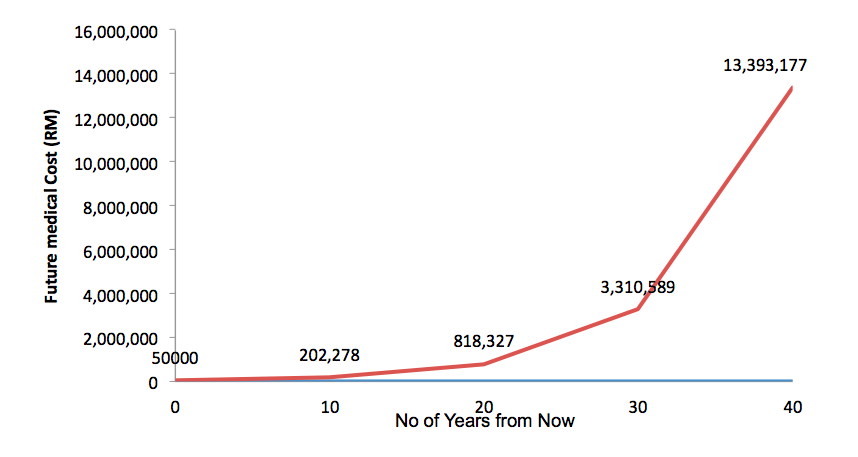
A lot of people prefer to use high return (always associated with high risk) investment vehicles to hedge against high medical cost.
The table below gives you a clearer picture on how much to invest per month in order to catch up with the medical inflation.
|
No of Years from Now |
Future Medical Cost |
Target Yearly Saving @ 8% Return |
Target Monthly Saving @ 8% Return |
|
10 |
202,278 |
12,929 |
1,077 |
|
20 |
818,327 |
16,558 |
1,380 |
|
30 |
3,310,589 |
27,059 |
2,255 |
|
40 |
13,393,177 |
# 47,870 |
3,989 |
# As illustrated in the below calculation using Financial Calculator
In short, if you were now 30 years old and would like to have RM13 million to cater for future medical cost 40 years from now, you have to invest RM47,870 (approximately RM3,989 per month) in investment vehicles gaining 8% per annum (continuously without fail) in order to achieve your target.
Do keep in mind that the money accumulated is not for you to enjoy, it is eventually to be transferred to doctors & hospitals. Alternatively, you can do what I did just now, review your medical plans to ensure your medical coverage is inflation-proof or at least will increase in value so that you will not be badly affected during old age.

In the current health care system, when you seek medical treatment at private clinics/hospitals, you either pay from your own pocket or, if you have medical insurance, your insurance company will pay for your expenses.
For government clinics or hospitals, you pay a small fee only because the expenses are paid using taxpayers’ (our) money.
1Care is going to change all this. It would be a major revamp whereby the government wants you to believe that 1Care will make health care cheaper and better for citizens from all walks of life. All private clinics and hospitals need to join this sytem for standardization. A noble intention, yes, but wait until you read about some of the salient points regarding its proposed implementation below.
- You pay a mandatory 10 percent deduction of your monthly gross salary to contribute to National Health Care Financing Authority (NHFA).
- You cannot opt out. Your employer will face legal action if they do not participate.
- You cannot choose your doctor to seek free medical treatment. 1Care system will assign one for you. If you want to consult other medical practitioner, you need to pay your own.
- You only have the basic health care services for free. How "basic” is anyone’s guess for now. If your medical treatment is not under the "basic package”, you need to pay your own.
- NHFA will pay RM 60 to the assigned doctor whom you seek medical treatment from. This only covers consultation fees and injection, if needed. Patients will be charged current private health care rates instead of public health care rates.
- You need to go the the pharmacy for the prescribed medicine. Insurance companies will have major say in the price and the range of this standardised medicine list. It will likely to be the cheapest medicine. This will save cost for 1Care and maximise profit for the insurance companies. If you don’t like the medicine prescribed, you need to pay for your own medicine.
- Like all medical insurance, there is a limitation on the number of visits to your assigned doctor – 6 visits per year. Exceeding this limit means you need to pay on your own.
- Your assigned doctor decides which specialist you can go to. If you wish to see the specialist or go to a hospital of your choice, you need to pay on your own.
- There is NO refund on your 10 percent monthly deduction even if you do not seek any medical treatment at all!

PROVISIONS RELATING TO POLICIES
141. Assumption of risk.
142. Premium rate under life policy.
143. Actuary’s report on policy terms.
144. Premium rate under general policy.
144. Review of premium rate.
146. Notice regarding proof of age.
147. Mis-statement of age and non-avoidance of policy.
148. Objection to life policy.
149. Control of proposal form, policy or brochure.
150. Duty of disclosure.
151. Knowledge of, and statement by, insurance agent.
152. Insurable interest.
153. Capacity of minor to insure.
154. Life policy moneys to be paid without deduction.
155. Surrender of life policy.
156. Non-payment of life policy premiums.
157. Particulars in policy.
158. Election for paid-up policy.
159. Additional rights conferred by sections 155, 156 and 158.
160. Collection of premiums at policy owner’s address.
161. Interest on claim amount.
PAYMENT OF POLICY MONEYS UNDER A LIFE
POLICY OR PERSONAL ACCIDENT POLICY
163. Power to make nomination.
164. Revocation of nomination.
165. Payment of policy moneys where there is nomination.
166. Trustee of policy moneys.
167. Nominee other than a nominee under subsection 166(1).
168. Assigned or pledged policy moneys.
169. Payment of policy moneys where there is no nomination.
170. Payment to person incompetent to contract.
171. Distribution of policy moneys in due course of administration.
172. This Part to prevail over policy and any other written law.
INSURANCE GUARANTEE SCHEME FUND
174. Investment of moneys.
175. Bank may borrow moneys.
176. Levy.
177. Discontinuance of levy.
178. Utilisation of moneys.
179. Restriction on utilisation of moneys.
180. Determination of moneys payable.
181. Partial payment of claim.
182. Payment of claim.
183. Assistance in administration.
MISCELLANEOUS
185. Restriction on insurance broker and financial adviser.
186. Insurance intermediary.
GENERAL PROVISIONS
188. Refund of moneys obtained in contravention of this Act.
189. Compensation.
190. Notification of certificate.
191. Indemnity.
192. Annual report.
193. Submission of information and statistics.
194. Service of notices.
195. Secrecy.
196. Permitted disclosure.
197. Decision of Minister to be final.
198. Exemptions.
199. Application of other laws.
200. Non-application of Act.
201. Power to issue guidelines.
202. Regulations.
OFFENCES
204. Continuing offence.
205. Offence in relation to entries in documents.
206. Offence by body corporate.
207. Offence by individual.
208. Joinder of offences.
209. Seizable offence.
210. Arrested person make over to police.
211. Power of Governor to compound offences.
212. Attempts, abetments and conspiracies.
213. Prosecution.
PROVISIONS RELATING TO POLICIES
Insurance of property and liability.
general insurer, and after consultation with the Minister, may approve under subsection (1) for the nsurance to be effected outside Malaysia.
(a) "property” means property, movable or immovable, located in Malaysia, including any ship or aircraft registered in Malaysia;
Assumption of risk. 141. (1) No licensed general insurer shall assume any riskin respect of such description of general policy as may beprescribed unless and until the premium payable is received
by the licensed general insurer in such manner and withinsuch time as may be prescribed.
Penalty : Five hundred thousand ringgit.
who was not authorised to receive the premium shall lie onthe licensed general insurer.
(a) may prohibit the licensed life insurer from offering thelife policy to the public; or
(b) may require the licensed life insurer to make suchchanges to the life policy product as the Bank mayspecify before offering it to the public.
Penalty : One million ringgit. Default penalty.
(4) The certificate of the appointed actuary shall be in suchform as the Bank may specify.
with regard to the actuarial basis for determination ofpremium rates.
(6) The appointed actuary in certifying premium rates fora life policy product shall have regard to the maximum rateof commission or discount proposed to be paid or allowed toa person, for that description of policy.
(7) Where premium rates are certified by the appointedactuary for a life policy product, the licensed life insurer,except with the approval of the Bank, shall not pay or allowin respect of a policy of that description, commission at arate greater than the maximum rate of commission.
Penalty : One million ringgit.
Actuary’s report onpolicy terms.
143. (1) The Bank may direct a licensed life insurer toappoint an actuary approved by the Bank to furnish withinthe time specified in the notice, a report on—
(a) the suitability of the policy terms and premium ratesfor the time being chargeable by the licensed lifeinsurer for a life policy product; or
(a) may prohibit the licensed life insurer from offering thelife policy product to the public; or
Penalty : One million ringgit.
(3) Upon receipt of the report, the Bank shall notify theremuneration which the licensed life insurer hall pay to theactuary.
Premium rate undergeneral policy.
144. No licensed general insurer or association of licensedgeneral insurers shall adopt a tariff of premium rates, or atariff of policy terms and conditions, for a description ofgeneral policy which is obligatorily applicable to licensedgeneral insurers, except with the prior written approval of theBank.
Review of premiumrate.
145. The Bank may require a licensed insurer or anassociation of licensed life or general insurers—
(a) to review the premium rates of a description of life orgeneral policy on the basis of the insurance claimsexperience of the licensed insurer or all licensedinsurers or other factors relevant to the determinationof premium rates; or
(b) to justify its premium rates for a description of life orgeneral policy and the Bank, if it considers fit, maydirect the licensed insurer to increase or reduce thepremium rates.
Penalty : One million ringgit. Default penalty.
Notice regarding proofof age.
146. Where a licensed life insurer issues a life policy whichprovides that proof of age of the life insured is a conditionprecedent to the payment of benefits under the life policy andit has not admitted the age of the life insured, it shall issue onor with the life policy a printed notice stating that proof ofage of the life insured may be required prior to the paymentof benefits under the life policy.
Mis-statement of ageand non-avoidance ofpolicy.
147. (1) A licensed life insurer shall not dispute liabilityunder a life policy by reason only of a mis-statement of theage of the life insured.
(2) Where the true age as shown by the proof is greaterthan that on which the life policy is based, the licensed lifeinsurer may vary the sum insured by, and the bonusesallotted to, the life policy so that, as varied, they bear thesame proportion to the sum insured by, and the bonusesallotted to, the life policy before variation as the amount ofthe premiums that have been paid under the life policy asissued bears to the amount of the premiums that would havebecome payable if the life policy had been based on the trueage.
(3) Where the true age as shown by the proof is less thanthat on which the life policy was based, the licensed lifeinsurer—
(a) may vary the sum insured by, and the bonuses allottedto, the life policy so that, as varied, it bears the sameproportion to the sum insured by, and the bonusesallotted to, the life policy before variation as theamount of the premiums that have been paid under thelife policy as issued bears to the amount of thepremiums that would have become payable if the lifepolicy had been based on the true age; or
(b) may reduce the premium as from the date of issue ofthe life policy, to the amount that would have beenpayable if the life policy had been based on the trueage and repay the policy owner the amount of overpaymentsof premium less any amount that has beenpaid as the cash value of bonuses in excess of the cashvalue that would have been paid if the life policy hadbeen based on the true age.
(4) A licensed life insurer shall not dispute the validity ofa life policy after the expiry of two years from the date onwhich it was effected on the ground that a statement made oromitted to be made in the proposal for insurance or in areport of a doctor, referee, or any other person, or in adocument leading to the issue of the life policy, wasinaccurate or false or misleading unless the licensed lifeinsurer shows that the statement was on a material matter orsuppressed a material fact and that it was fraudulently madeor omitted to be made by the policy owner.
(5) For the purpose of subsection (4), "material matter” or"material fact” means a matter or fact which, if known by thelicensed life insurer, would have led to its refusal to issue alife policy to the policy owner or would have led it to imposeterms less favorable to the policy owner than those imposed
in the life policy.
(6) Nothing in this section shall prevent the licensed lifeinsurer from calling for proof of age at any time and no lifepolicy shall be deemed to be disputed merely because theterms of the life policy are adjusted in accordance withsubsections (2) or (3).
Objection to lifepolicy.
148. (1) A policy owner, within fifteen days after thedelivery of a life policy of any description to him or to aperson who resides at his residence, may return the lifepolicy to the licensed life insurer and it shall immediatelyrefund any premium which has been paid in respect of thepolicy and the life policy shall be cancelled subject only tothe deduction of expenses incurred for the medicalexamination of the life insured.
Penalty : Five hundred thousand ringgit
(2) subsection (1) shall not apply to a life policy insuringthree or more persons.
(3) For the purpose of subsection (1), a life policy shall bedeemed to be returned to a licensed life insurer on the datethe life policy is received by it or posted to it by registeredpost.
Control of proposalform, policy orbrochure.
submit a translation of it in the national language or English.
Penalty : One million ringgit
(2) The Bank, after giving the licensed insurer anopportunity to be heard, by notice in writing may direct thelicensed insurer to discontinue the use of the proposal form,policy or brochure from a date specified in the notice, oruntil it is modified in such manner as the Bank may specify.
Penalty : One million ringgit
(3) Unless directed by the Bank under subsection (2), alicensed insurer may continue to use the proposal form,policy or brochure lodged with the Bank in accordance withsubsection (1).
(4) A proposal form and, where no formal proposal formis used, a request for particulars by the licensed insurer shallprominently display a warning that if a proposer does notfully and faithfully give the facts as he knows them or oughtto know them, the policy may be invalidated.
(5) The Bank may specify a code of good practice inrelation to any description of proposal form, policy orbrochure.
Duty of disclosure.
(a) he knows to be relevant to the decision of the licensedinsurer on whether to accept the risk or not and therates and terms to be applied; or
(b) a reasonable person in the circumstances could beexpected to know to be relevant.
(a) diminishes the risk to the licensed insurer;
(b) is of common knowledge;
(c) the licensed insurer knows or in the ordinary course ofhis business ought to know; or
(d) in respect of which the licensed insurer has waived
(3) Where a proposer fails to answer or gives anincomplete or irrelevant answer to a question contained inthe proposal form or asked by the licensed insurer and thematter was not pursued further by the licensed insurer,compliance with the duty of disclosure in respect of thematter shall be deemed to have been waived by the licensedinsurer.
(4) No licensed insurer, insurance agent, licensed financialadviser or financial adviser’s representative, in order toinduce a person to enter into or offer to enter into a contractof insurance with it or through him—Act A1247.
(a) shall make a statement which is misleading, false ordeceptive, whether fraudulently or otherwise;
(b) shall fraudulently conceal a material fact; or
(c) in the case of an insurance agent, a licensed financialadviser or a financial adviser’s representative, usesales brochure or sales illustration not authorised bythe licensed insurer.
Penalty : One million ringgit.
(5) Where a person is induced to enter into a contract ofinsurance in a manner described in subsection (4), thecontract of insurance shall be voidable and the person shallbe entitled to rescind it.
Knowledge of, andstatement by,insurance agent.
(2) A statement made, or an act done, by the insuranceagent shall be deemed, for the purpose of the formation ofthe contract of insurance, to be a statement made, or actdone, by the licensed insurer notwithstanding the insuranceagent’s contravention of subsection 150 (4) or any otherprovision of this Act.
(3) Subsection (1) shall not apply—
(a) where there is collusion or connivance between theinsurance agent and the proposer in the formation ofthe contract of insurance; or
(b) where a person has ceased to be an insurance agent ofa licensed insurer and it has taken all reasonable stepsto inform, or bring to the knowledge of, potentialpolicy owners and the public in general of the fact ofsuch cessation.
the time the insurance is effected and the policy moneyspayable, or where the policy moneys are payable ininstalments, the discounted value of all future instalmentsunder the life policy, shall not exceed the amount of thatinsurable interest at the time the event resulting in paymentof policy moneys occurs.
(3) In this section, "insuring the life of a person” meansinsuring the payment of moneys on a person’s death or onthe happening of any contingency dependent on thetermination or continuance of his life and includes granting,an annuity to commence on his death or at a time referred toin the annuity.
Capacity of minor toinsure.
(a) may effect a life policy upon his own life or uponanother life in which he has an insurable interest; or
(b) may assign the life policy on his own life.
(2) A minor who has attained the age of sixteen years—
(a) may effect a life policy upon his own life or uponanother life in which he has an insurable interest; or
(b) may assign the life policy on his own life,and is as competent in all respects to have and exercise thepowers and privileges of a policy owner in relation to a lifepolicy of which he is the owner as he would be if he hadattained the age of majority.
Life policy moneys tobe paid withoutdeduction.
(2) A provision contained in a life policy or an agreementrelating to deduction of moneys not due under the life policyshall be void to the extent it entitles the licensed life insurerto deduct the moneys from policy moneys payable under, or moneys payable on the surrender of the life policy withoutthe consent of the person entitled to the policy moneys.
(3) Subsections (1) and (2) apply to a Malaysian life policy but shall not apply to a life policy issued before 21January 1963.
Surrender of lifepolicy.
(a) inception of a single premium life policy; or
(b) a life policy other than a single premium life policyhas been in force for three years or more,
the policy owner, by notice in writing to the licensed lifeinsurer, may surrender the life policy and he shall be entitledto receive the surrender value of the life policy, determined in such manner as may be prescribed but subject to adeduction of moneys due under the life policy or under anagreement charging the moneys on the life policy.
(2) Notwithstanding paragraph (1)(b), a licensed life insurer may provide a surrender value for a life policy which has been in force for less than three years.
(3) A life policy shall remain in force until the licensedlife insurer has effected payment of the surrender value ofthe life policy.
Non-Payment of lifepolicy premiums.
(2) No licensed life insurer shall adopt a system for thepurpose of subsection (1) unless it has filed the particulars ofthe system with the Bank at least thirty days before theeffective date for adoption of the system.
(3) Where the Bank considers the system of a licensed lifeinsurer inappropriate for any reason, it may require thelicensed life insurer by notice in writing to amend the systemin such manner as the Bank may specify.
(4) A licensed life insurer shall inform the policy owner atthe time of issue of the life policy the system undersubsection (1) applicable to that life policy and the systemshall not be altered except in favour of the policy ownerwhile that life policy is in force.
(5) A licensed life insurer, upon receipt of a notice undersubsection (3), shall not use the system unless it is modifiedas specified.
Penalty : Five hundred thousand ringgit. Default penalty.
(6) Notwithstanding subsection (1), a licensed life insurermay provide the benefit under this section for a life policywhich has been in force for less than three years.
Particulars in policy.
(2) A licensed life insurer shall incorporate a statement indistinctive type in a life policy—
(a) stating whether the life policy is or is not a participating policy; and
(b) that the policy owner, by notice in writing to thelicensed life insurer, may surrender the life policy
under section 155 and be entitled to receive thesurrender value.
Penalty : Five hundred thousand ringgit.
Election for paid-uppolicy.
(2) A life policy issued in place of an earlier life policyshall be treated as having come into force on the date theearlier life policy came into force. Additional rightsconferred by sections155,156 and 158.
Collection ofpremiums at policyowner’s address.
(2) In respect of a life policy to which subsection (1)applies, payment to the person whom the licensed life insureremploys for the collection of premiums shall be deemed tobe payment to the licensed life insurer.
Interest on claimamount.
the sixty days until the date of payment.
(2) This section applies to payment made under Part XIII.
PAYMENT OF POLICY MONEYS UNDER A LIFE
POLICY OR PERSONAL ACCIDENT POLICY
Application of thisPart.Act 67.
162. In this Part, a reference to a policy is a reference to alife policy, including a life policy under section 23 of theCivil Law Act 1956, and a personal accident policy, effectedby a policy owner upon his own life providing for paymentof policy moneys on his death.
Power to makenomination.
163. (1) A policy owner who has attained the age ofeighteen years may nominate a natural person to receivepolicy moneys payable upon his death under the policy bynotifying the licensed insurer in writing the name, date ofbirth, identity card number or birth certificate number andaddress of the nominee—
(a) when the policy is issued, or
(b) after the policy has been issued, together with the policy for the licensed insurer’s endorsement of thenomination on the policy.
(2) A nomination made under subsection (1) shall bewitnessed by a person of sound mind who has attained theage of eighteen years and who is not a nominee named underthat subsection.
(a) shall prominently display in the nomination form thatthe policy owner has to assign the policy benefits tohis nominee if his intention is for his nominee, other than his spouse, child or parent, to receive the policybenefits beneficially and not as an executor;
(b) shall record the nomination and the particulars of thenominee in its register of policies; and
(c) shall return the policy to the policy owner afterendorsing the nomination on the policy or by issuing
an endorsement to the original policy by registeredmail to the policy owner and the nomination shall takeeffect from the date the nomination is registered by thelicensed insurer.
(5) A nomination made under subsection (1) may be infavour of one person or several persons and where there ismore than one person nominated, the policy owner maydirect that specified shares be paid to the persons nominatedand in the absence of direction by the policy owner, thelicensed insurer shall pay the persons in equal shares.
Revocation ofnomination.
164. (1) A nomination, including a nomination to whichsection 166 applies, shall be revoked—
(a) upon the death of the nominee, or where there is morethan one nominee, upon the death of all the nominees,during the life-time of the policy owner;
(b) by a notice in writing given by the policy owner; or
(c) by any subsequent nomination.
(2) Subject to subsection (1), a nomination shall not berevoked by a will or by any other act, event or means.
(3) Where there is more than one nominee and one of thenominees predeceases the policy owner, in the absence ofany subsequent nomination by the policy owner disposing ofthe share of the deceased nominee, the licensed insurer shallpay the share to the remaining nominees in proportion totheir respective shares.
Payment of policymoneys where there isnomination.
165. (1) Subject to subsection (2), where a policy ownerdies having made a nomination, the licensed insurer shall paythe policy moneys of the deceased policy owner according to the direction of the nomination upon receipt of a claim by thenominee and the claim is accompanied by proof of death of
the policy owner.
(2) Where a nominee fails to claim the policy moneyswithin sixty days of the licensed insurer becoming aware ofthe death of the policy owner, the licensed insurer shallnotify the nominee in writing at his last known address of hisentitlement to claim the policy moneys.
(3) Where a nominee fails to claim the policy moneyswithin twelve months of the licensed insurer becoming awareof the death of the policy owner despite notification undersubsection (2), section 169 shall apply as though nonomination was made.
(4) Where a nominee, other than a nominee under section166, dies after the death of the policy owner but before anypolicy moneys has been paid to him as nominee, section 164or 169 shall apply to the policy, as the case may be.
(a) the nominee is his spouse or child; or
(b) where there is no spouse or child living at the time ofnomination, the nominee is his parent.
(a) the nominee who is competent to contract; or
(b) where the nominee is incompetent to contract, theparent of the incompetent nominee and where there isno surviving parent, the Public Trustee,shall be the trustee of the policy moneys and the receipt of atrustee shall be a discharge to the licensed insurer for allliability in respect of the policy moneys paid to the trustee.
Nominee other than anominee under
(2) Subsection (1) applies to a nominee of a Muslimpolicy owner who, on receipt of the policy moneys, shalldistribute the policy moneys in accordance with Islamic law.
Assigned or pledgedpolicy moneys.
security or assigned to a person, the claim of the personentitled under the security or the assignee shall have priorityover the claim of the nominee and subject to the rights underthe security or the assignment being preserved, the licensedinsurer shall pay the balance of the policy moneys to the
nominee.
(2) Where more than one person are entitled under thesecurity or the assignment, the respective rights of thepersons entitled under the security or the assignment shall bein the order of priority according to the priority of the date onwhich the security or the assignment was created, bothsecurity and assignment being treated as one class for thispurpose.
Payment of policymoneys where there isno nomination.
169. (1) Where a policy owner of a policy dies withouthaving made a nomination, subject to section 168, thelicensed insurer shall pay the policy moneys of the deceasedpolicy owner to the applicant who produces the Grant of Probate or Letters of Administration or Distribution Order.
(2) Subject to subsection (1), the licensed insurer may payto the policy owner’s spouse, child or parent in that order ofpriority and where there are more than one spouse, child orparent, in equal shares to each person of that class and wherethere is no spouse, child or parent and—
(a) where the policy moneys do not exceed a hundredthousand ringgit or such greater amount as may beprescribed, the licensed insurer may pay all that policymoneys without requiring the Grant of Probate or
Letters of Administration or Distribution Order—
(i) to a person who satisfies the licensed insurer to beentitled and likely to be given the Grant of Probateor Letters of Administration or Distribution Order;
or
(ii) to a person who satisfies the licensed insurer to bebeneficially entitled to the estate of the deceased
policy owner; or
(b) where the policy moneys are more than a hundredthousand ringgit, or such greater amount as may beprescribed, the licensed insurer may pay to the personreferred to in subparagraph (a)(i) or (ii) the amountreferred to in that paragraph and subject to subsection(6), pay to that person the balance of the policymoneys upon production of the Grant of Probate or
Letters of Administration or Distribution Order.
(3) In this section, a reference to policy moneys is areference to the aggregate amount of policy moneys inrespect of all policies of the policy owner with that licensedinsurer where there is no nomination.
(4) The Grant of Probate or Letters of Administration orDistribution Order granted or having effect as if granted, inrespect of the personal estate comprising the policy moneys,by a Court in Malaysia or a competent authority outsideMalaysia, or its certified copy shall be sufficient proof to the licensed insurer to pay the policy moneys to the person towhom the grant was made.Act 97.
Court in Malaysia and sealed in accordance with the Probateand Administration Act 1959.
(6) Where, upon the expiry of twelve months after apayment under paragraph (2)(b) has been made by a licensedinsurer, and a balance of the policy moneys still remainspayable and no claim has been made by a person who holds a Grant of Probate or Letters of Administration or DistributionOrder, the licensed insurer shall pay the balance of the policymoneys to the person who received the initial payment of the policy moneys.
(7) Policy moneys paid under this section shall be deemedto have been duly paid and the licensed insurer shall bedischarged from liability in respect of the policy moneys sopaid notwithstanding the absence or invalidity of, or anydefect in the Grant of Probate or Letters of Administration orDistribution Order or any other document having the sameeffect.
(8) A person to whom a payment may be made under thissection shall give a receipt which shall be deemed to be avalid receipt.
Payment to person incompetent tocontract.
170. Where a person has not attained the age of eighteenyears, or who is certified by a medical practitioner in thepublic service to be of unsound mind and no committee ofhis estate has been appointed, or to be incapable, by reasonof infirmity of mind or body, of managing himself and his
property and affairs, the licensed insurer—
(a) in the case of a nominee under subsection 166 (1)—
(i) if the policy moneys are ten thousand ringgit orless or such other amount as may be prescribed,
may pay to a person who satisfies the licensedinsurer that he will apply the policy moneys for the
maintenance and benefit of the nominee undersubsection 166 (1), as the case may be, or a person
to whom policy moneys are payable undersubsection 169 (2) or (6), subject to the execution
of an undertaking by that person that policymoneys will be applied solely for the maintenance
and benefit of the nominee; and
171. A person to whom policy moneys may be paid undersection 169 shall receive the policy moneys as an executorand not solely as a beneficiary and shall distribute the policymoneys in due course of administration of the estate of thedeceased person in accordance with the terms of a will of the
deceased person, and if there is no such will, in accordancewith the law applicable to the administration, distributionand disposition of his estate upon his intestacy.
172. (1) This Part shall have effect in relation to a policywhich is in force on or after the effective date, and in relationto a nomination made before, on or after the effective date,notwithstanding anything contained in the policy, andnothing contained in a policy shall derogate from, or beconstrued as derogating in any manner or to any extent from,this Part.
(2) This Part shall have full force and effectnotwithstanding anything inconsistent with or contrary to
any other written law relating to probate, administration,distribution, or disposition, of the estates of deceasedpersons, or in any rule of law, practice or custom in relationto these matters.
PART XIV
INSURANCE GUARANTEE SCHEME FUND
Establishment andmaintenance ofinsurance guaranteescheme fund.
173. (1) The Bank may establish and maintain a separateinsurance guarantee scheme fund for general business andfor life business in so far as the business relates to Malaysianpolicies.
(2) The Bank shall remit into the. insurance guaranteescheme fund for general business, and into the insuranceguarantee scheme fund for life business—
(a) levies collected from a licensed general insurer orlicensed life insurer, as the case may be;
(b) investment income and accretions of capital oninvestments of the assets of the insurance uarantee
scheme fund;
(c) proceeds from the realisation of investments of theassets of the insurance guarantee scheme fund;
(d) moneys recovered from the liquidator of an insurerthat is being wound up;
(e) moneys borrowed under section 175;
(f) donations or contributions from any person; and
(g) fines under subsection 211 (2).Investment of moneys.
the fund.
Bank may borrowmoneys.
175. The Bank may borrow moneys for an insuranceguarantee scheme fund to such extent, in such manner, fromsuch person or source, and on such condition, as the Ministermay approve.
Levy.
Penalty : One million ringgit. Default penalty.
(2) The rate to be specified by the Bank under subsection(1) shall be not more than one per cent of the direct premiumincome of the licensed insurer in respect of its Malaysianpolicies during the financial year immediately preceding thatdate.
(3) Where a licensed insurer has not submitted its accountsunder subsection 87 (1), for the purpose of calculating theamount of levy payable by that licensed insurer, the Bankmay collect a provisional amount of levy which shall beadjusted according to the direct premium income in theaccounts.
(4) Notwithstanding the revocation of its licence, aninsurer shall continue to pay levy to an insurance guaranteescheme fund if it continues to receive premium.
(5) An insurer shall not be entitled to a refund of levywhere its direct premium income is negative.
(6) A levy which is payable under subsection (1) shall be adebt due to an insurance guarantee scheme fund.
(7) In subsections (2) and (3), "direct premium income”,
in relation to—
(a) general insurance business, means the premiumcharged to policy owners in respect of policies issuedto them net of any premium refunded to them, butdoes not include premium receivable under
reinsurance policies;
(b) life business, means the single, first year and renewalpremium receivable from policy owners.
Discontinuance oflevy.
177. The Minister, at his discretion, may direct the Bank todiscontinue the collection of levy if he is satisfied that thereis adequate moneys in an insurance guarantee scheme fundbut if circumstances warrant, he may direct the Bank toresume the collection.
Utilisation of moneys.
moneys in an insurance guarantee scheme fund—
(a) to meet the administrative, legal and other costs ofmaintaining and administering the insurance guaranteescheme fund;
(b) to repay moneys borrowed under section 175 and topay interest on moneys borrowed; and
(c) to meet the liabilities of an insolvent insurer to apolicy owner or person entitled through him.
(2) Moneys paid to a policy owner, or a person entitledthrough him, from an insurance guarantee scheme fundtogether with any moneys receivable by him from any othersource or from the liquidator, shall not exceed ninety percent of the lawful amount of moneys due to him.
(3) For the purpose of this Part, an insurer shall be deemedto be insolvent if—
(a) at the end of the last accounting period for whichstatements have been lodged with the Bank under
section 87, the insurer is insolvent;
(b) winding up proceedings have been commencedagainst the insurer; or
(c) a receiving order has been made against it by theCourt.
Restriction onutilisation of moneys.
(2) Notwithstanding subsection (1), moneys in aninsurance guarantee scheme fund shall not be utilised topay—
(a) liabilities of an insolvent insurer to its manager,director, controller, associate or the associate of a
body corporate of which that insolvent insurer is asubsidiary; and
(b) liabilities of an insolvent insurer that is being woundup unless the liquidator is notified of the liability
within six months from the effective date of itswinding up order or such other period as the Bank
may approve in the case of a particular insurer orpolicy owner or person entitled through him.
Determination ofmoneys payable.
180. (1) Subject to subsection 178 (2), the Bank, havingregard to the assets of an insolvent insurer, may determine—
(a) the percentage of a claim or description of claims thatis payable by an insurance guarantee scheme fund; or
(b) that no payment shall be made from an insuranceguarantee scheme fund where the moneys payable inrespect of a claim is less than ten ringgit or such.greater amount as the Bank may prescribe.
(2) The Bank may impose a maximum amount on a claimor description of claims of an insolvent insurer which ispayable by an insurance guarantee scheme fund.
Partial payment ofclaim.
181. Where a claim is partially paid by another person, theclaimant shall only be entitled to claim from the insuranceguarantee scheme fund in relation to an amount that isreduced by that partial payment.
Payment of claim.
(2) The Bank, in its discretion, may pay out of aninsurance guarantee scheme fund to a claimant of an
insolvent insurer, the amount of dividend that may bedeclared by that insolvent insurer’s liquidator together withthe amount due from the insurance guarantee scheme fund,subject to the claimant assigning all his rights in respect ofthe claim in favour of the insurance guarantee scheme fund
and upon the claimant accepting the payment from theinsurance guarantee scheme fund in full and final settlementof his claim.
(3) Notwithstanding subsections (1) and (2), wheremoneys in an insurance guarantee scheme fund is insufficientto meet its obligations, the Bank may pay a claim ininstalments, or defer making payment, out of the insuranceguarantee scheme fund.
Assistance inadministration.
183. The Bank may appoint a suitable person to assist it inthe administration and distribution of oneys in an insuranceguarantee scheme fund.
(a) solicits or obtains a proposal for insurance on behalf of an insurer;
Activity constituting insurance business
8. (1) For the purposes of this Act, a reference to carrying on insurance business includes all or any of the following:
have reference to business done as insurance agent.
(a) receiving proposals for insurance;
(b) negotiating on proposals for insurance on behalf of an insurer;
(c) issuing of policies;
(d) collection or receipt of premiums on policies; or
(e) settlement or recovery of claims on policies.
(1) A person who is authorized by a licensed insurer to be its insurance agent and who solicits or negotiates
a contract of insurance in that capacity shall be deemed, for the purpose of the formation of the contract of
insurance, to be the agent of the licensed insurer and the knowledge of that insurance agent shall be
deemed to be the knowledge of the licensed insurer.
formation of the contract of insurance, to be a statement made, or act done, by the licensed insurer
notwithstanding the insurance agent’s contravention of subsection 150(4) or any other provision of this
Act.
(a) where there is collusion or connivance between the insurance agent and the proposer in the formation of the contract of insurance; or
reasonable steps to inform, or bring to the knowledge of, potential policy owners and the public in general of the fact of such cessation.
Offences by director, employee or agent of insurer
124. No director, employee, agent or contributory, past or present,of an insurer which is being wound up -
(a) after its cessation of insurance business, shall continue to issue a policy;
(i) shall conceal any part of its property, or conceal any debt due to or from it;
(ii) shall remove fraudulently any part of its property;
(iii) by himself or through another person, shall alter,conceal, destroy, mutilate or falsify a document
relating to its property or affairs;
(iv) shall make, or cause to be made, any false or fraudulent entry in a document affecting, or relating to
its property or affairs;
(v) by himself or through another person, shall part fraudulently with, alter or make any omission in
a document relating to its property or affairs;
which it has not subsequently paid for;
(vii) shall obtain on credit, for or on its behalf, under the false pretence that it is carrying on its business, a property which it has not subsequently paid for;
(ix) shall attempt to account for any part of its property by fictitious losses or expenses; or
(x) shall make any false representation or other fraud for the purpose of obtaining the consent of its
creditors to an agreement with reference to its affairs or to its winding up; or
(i) shall make material omission in a statement relating to its affairs;
(ii) knowing or believing that a false debt has been proved by a person, shall fail to inform the liquidator; or
Penalty: Imprisonment for five years or five million ringgit or both. Default penalty.
Offence by individual
207. Where a person is liable under this Act to a penalty for any act, omission, neglect or default, he shall be liable to the same penalty for the act, omission, neglect or default of his employee, director, controller, or agent if the act, omission, neglect or default
was committed by—
(a) his employee in the course of the employee’s employment;
(b) his director in carrying out the function of a director;
(c) his controller in carrying out the function of a controller;or
(d) his agent when acting on his behalf.

8 Secrets of success
The 8 To Be Great really are the key things that have taken the worlds most successful people from the bottom to the top. But you could be thinking, Wait a minute. These 8-Traits are all so simple.
Passion,
Work,
Focus,
Push,
Ideas,
Improve,
Serve, and
Persist are really common sense.
Isnt there a secret or something magical that great people know about, and I dont? Well, the answer is No!
The secret of success is: There are NO secrets. Ive been studying this for over 10 years and the 8 To Be Great are the foundation for success in any field. Other factors will also help us succeed, but if we dont have the 8-Traits we can try as many secrets as we want, and we still wont go far in life.
7 secrets to success of steve jobs
I'll save you some time. Here are Steve's 7:
1) Do what you love, don't settle
2) Put a dent in the universe
3) Say "No" to 1000 things
4) Kick-start your brain
5) Sell dreams, not products
6) Create insanely great experiences
7) Master the message
The future belongs to those who believe in the beauty of their dreams.
Eleanor Roosevelt
If you can imagine it, you can create it. If you dream it, you can become it.
William Arthur Ward
You see things; and you say, "Why?" But I dream things that never were; and I say, "Why not?"
George Bernard Shaw
You can never cross the ocean unless you have the courage to lose sight of the shore.
Christopher Columbus
Whether you think you can or think you can't, you're right.
Henry Ford
Yesterday is history. Tomorrow is a mystery. And Today? Today is a gift. That's why we call it the present.
Babatunde Olatunji
We are all in the gutter, but some of us are looking at the stars.
Oscar Wilde
Don't let what you can't do stop you from doing what you can do.
John Wooden
Our greatest glory is not in never falling, but in rising every time we fall.
Confucius
If we could see the miracle of a single flower clearly, our whole life would change.
Author Unknown
Sometimes attributed to Buddha, but this is disputed.
To live is the rarest thing in the world. Most people exist, that is all.
Oscar Wilde
The only man who never makes a mistake is the man who never does anything.
Theodore Roosevelt
We must become the change we want to see.
Mahatma Gandhi
I shall pass through this life but once. Any good therefore that I can do, or any kindness I can show, let me do it now. Let me not defer or neglect it. For I shall never pass this way again.
Etienne de Grellet
Imagination is more important than knowledge. Knowledge is limited. Imagination encircles the world.
Albert Einstein
The ultimate measure of a man is not where he stands in moments of comfort, but where he stands at times of challenge and controversy.
Martin Luther King Jr.
Always do right. This will gratify some people and astonish the rest.
Mark Twain
Blessed are those who can give without remembering and take without forgetting.
Elizabeth Bibesco
Begin doing what you want to do now. We are not living in eternity. We have only this moment, sparkling like a star in our hand and melting like a snowflake. Let us use it before it is too late.
Marie Beynon Ray
It is our choices that show what we truly are, far more than our abilities.
J.K. Rowling
If you want to be happy, be.
Leo Tolstoy
When one door of happiness closes, another opens; but often we look so long at the closed door that we do not see the one that has been opened for us.
Helen Keller
A thousand words will not leave so deep an impression as one deed.
Henrik Ibsen
The question isn't who is going to let me; it's who is going to stop me.
Ayn Rand
Your life is your message to the world. Make it inspiring.
Lorrin L. Lee
Gratitude is not only the greatest of virtues, but the parent of all the others.
Cicero
I have not failed. I've just found 10,000 ways that won't work.
Thomas Alva Edison
Never tell me the sky's the limit when there are footprints on the moon.
Author Unknown
First say to yourself what you would be; and then do what you have to do.
Epictetus
Never be afraid to try, remember...
Amateurs built the ark.
Professionals built the Titanic.
Author Unknown
Watch your thoughts; they become words.
Watch your words; they become actions.
Watch your actions; they become habits.
Watch your habits; they become character.
Watch your character; it becomes your destiny.
Frank Outlaw
If you are going through hell, keep going.
Winston Churchill
First ask yourself: What is the worst that can happen? Then prepare to accept it. Then proceed to improve on the worst.
Dale Carnegie
Everything is okay in the end, if it's not ok, then it's not the end.
Author Unknown
Never regret. If it's good, it's wonderful. If it's bad, it's experience.
Victoria Holt
Life is too short, so kiss slowly, laugh insanely, love truly and forgive quickly.
Author Unknown
This above all: to thine own self be true.
William Shakespeare
The dictionary is the only place that success comes before work.
Vince Lombardi
Be not afraid of going slowly; be only afraid of standing still.
Chinese Proverb
The longer we dwell on our misfortunes, the greater is their power to harm us.
Voltaire
When life gives you lemons, cut them in half and squirt life in the eye!
Author Unknown
Each morning when I open my eyes I say to myself: I, not events, have the power to make me happy or unhappy today. I can choose which it shall be. Yesterday is dead, tomorrow hasn't arrived yet. I have just one day, today, and I'm going to be happy in it.
Groucho Marx
You have to have a darkness...for the dawn to come.
Harrison Ford
A journey of a thousand miles begins with a single step.
Lao Tzu
If you're not failing every now and again, it's a sign you're not doing anything very innovative.
Woody Allen
Twenty years from now you will be more disappointed by the things that you didn't do than by the ones you did do. So throw off the bowlines. Catch the trade winds in your sails. Explore. Dream. Discover.
Mark Twain
My candle burns at both ends; it will not last the night; but ah, my foes, and oh, my friends - it gives a lovely light!
Edna St. Vincent Millay
The reasonable man adapts himself to the world; the unreasonable one persists in trying to adapt the world to himself. Therefore, all progress depends on the unreasonable man.
George Bernard Shaw
If I have seen further, it is by standing on the shoulders of giants.
Isaac Newton
There cannot be a crisis next week. My schedule is already full.
Henry Kissinger
I disapprove of what you say, but will defend to the death your right to say it.
Voltaire
True knowledge exists in knowing that you know nothing.
Socrates
And in knowing that you know nothing, that makes you the smartest of all.
Socrates
The wise learn many things from their enemies.
Aristophanes
No law or ordinance is mightier than understanding.
Plato
What is a cynic? A man who knows the price of everything and the value of nothing.
Oscar Wilde
A man never stands as tall as when he kneels to help a child.
Order of the Knights of Pythagoras
Better to light a candle than to curse the darkness.
Chinese Proverb
Life is far too important a thing ever to talk seriously about.
Oscar Wilde
The greatest way to live with honor in this world is to be what we pretend to be.
Socrates
Better a diamond with a flaw than a pebble without.
Confucius
The public interest is best served by the free exchange of ideas.
Judge John Kane
There is no sin except stupidity.
Oscar Wilde
When angry, count ten before you speak; if very angry, a hundred.
Thomas Jefferson
I have never met a man so ignorant that I couldn't learn something from him.
Galileo Galilei
A man who has committed a mistake and doesn't correct it, is committing another mistake.
Confucius
Wise men talk because they have something to say; fools, because they have to say something.
Plato
The human race has one really effective weapon, and that is laughter.
Mark Twain
For one human being to love another: that is perhaps the most difficult of our tasks; the ultimate, the last test and proof, the work for which all other work is but preparation.
Rainer Maria Rilke
Any fool can criticize, condemn, and complain -- and most fools do.
Dale Carnegie
Never keep up with the Joneses. Drag them down to your level.
Quentin Crisp
I never think of the future. It comes soon enough.
Albert Einstein
Do what you can with what you have where you are.
Theodore Roosevelt
It is easier to forgive an enemy than to forgive a friend.
William Blake
I would never die for my beliefs because I might be wrong.
Bertrand Russell
One who condones evils is just as guilty as the one who perpetrates it.
Martin Luther King
The only thing necessary for the triumph of evil is for good men to do nothing.
Edmond Burke
May the road rise to meet you. May the wind always be at your back. May the sun shine warm upon your face, the rains fall soft upon your fields and, until we meet again, may God hold you in the palm of his hand.
Irish Blessing
Some complain that roses have thorns others rejoice that thorns have roses!
Author Unknown
Reality is negotiable.
Tim Ferriss
What you are is God's gift to you, what you make of yourself is your gift to God.
Jewish Proverb
Never give up on something that you can't go a day without thinking about.
Author Unknown
Always be a firstrate version of yourself, instead of a secondrate version of somebody else.
Judy Garland
There is always one moment in childhood when the door opens and lets the future in.
Graham Greene
Advice is what we ask for when we already know the answer but wish we didn't.
Erica Jong
Tell me what company you keep and I'll tell you what you are.
Miguel de Cervantes
One who walks in another's tracks leaves no footprints.
Proverb
If I had to choose between betraying my country and betraying my friend, I hope I should have the guts to betray my country.
E. M. Forster
Wit is the only wall between us and the dark.
Mark van Doren
Remember there's no such thing as a small act of kindness. Every act creates a ripple with no logical end.
Scott Adams
Education is not the filling of a pail, but the lighting of a fire.
W. B. Yeats
Life is not meant to be easy, my child; but take courage -- it can be delightful.
George Bernard Shaw
Instead of loving your enemies, treat your friends a little better.
Ed Howe
We must learn to live together as brothers or perish together as fools.
Martin Luther King
Ideologies separate us. Dreams and anguish bring us together.
Eugene Ionesco
Injustice anywhere is a threat to justice everywhere.
Martin Luther King
Where all men think alike, no one thinks very much.
Walter Lippmann
It is better to die on your feet than to live on your knees!
Emiliano Zapata
I don't know who my grandfather was; I'm much more concerned to know what his grandson will be.
Abraham Lincoln
The man who makes no mistakes does not usually make anything.
Edward Phelps
Life is not a problem to be solved, but a reality to be experienced.
Soren Kierkegaard
But better die than live mechanically a life that is a repetition of repetitions.
D. H. Lawrence
If you don't make mistakes, you aren't really trying.
Coleman Hawking
It isn't the mountains ahead that wear you out, it's the grain of sand in your shoe.
Author Unknown
You've got to follow your passion. You've got to figure out what it is you love - who you really are. And have the courage to do that. I believe that the only courage anybody ever needs is the courage to follow your own dreams.
Oprah Winfrey
Live out of your imagination, not your history.
Stephen Covey

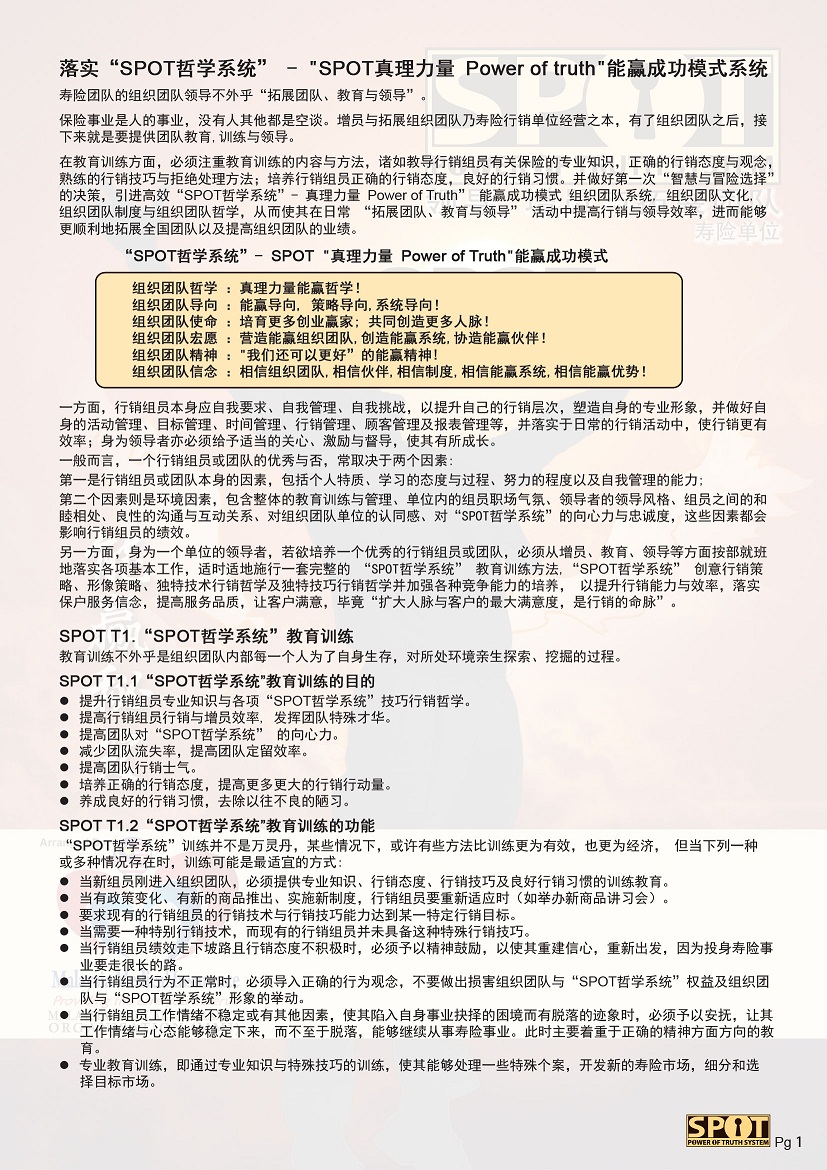
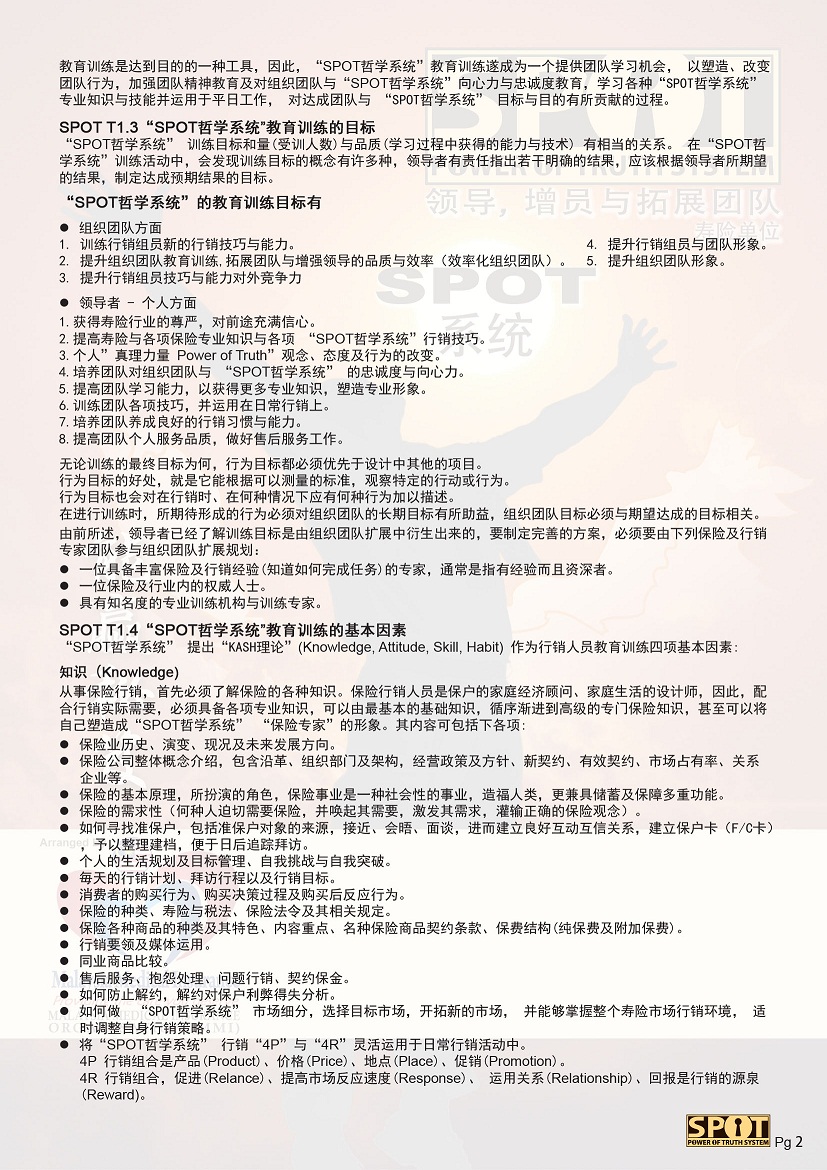
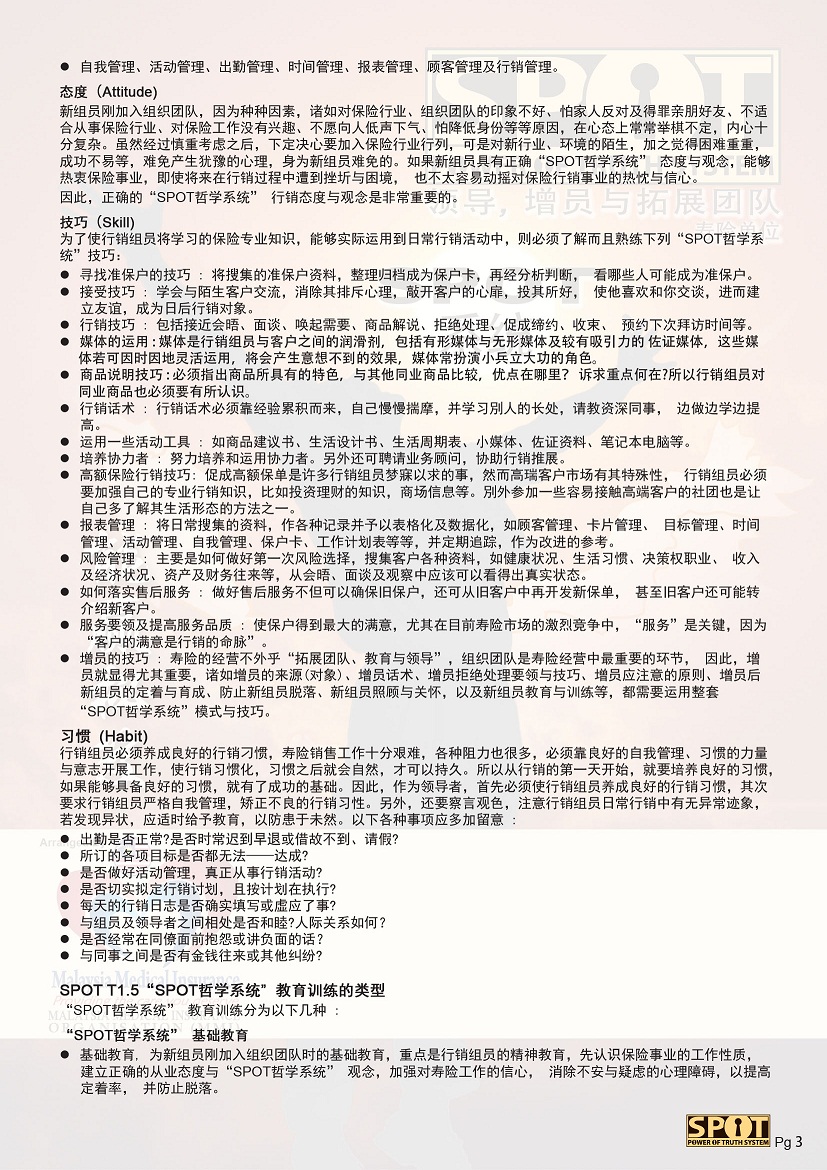
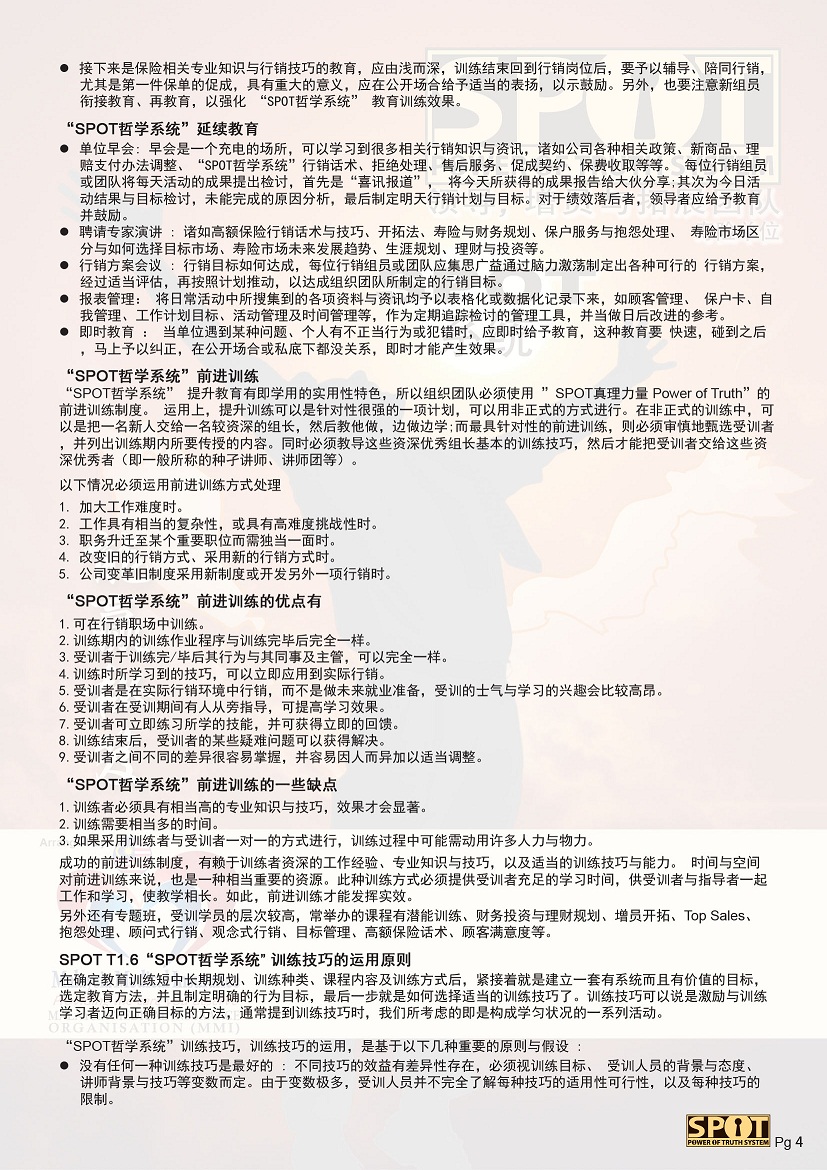
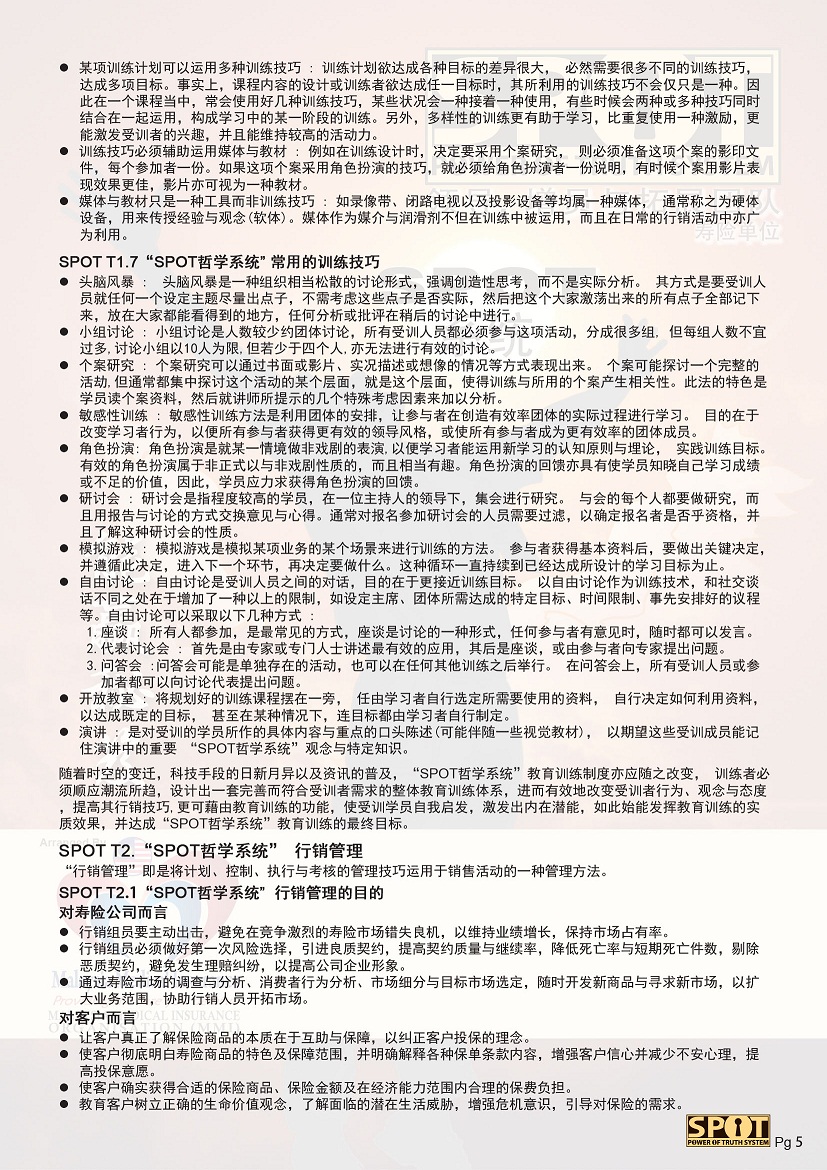
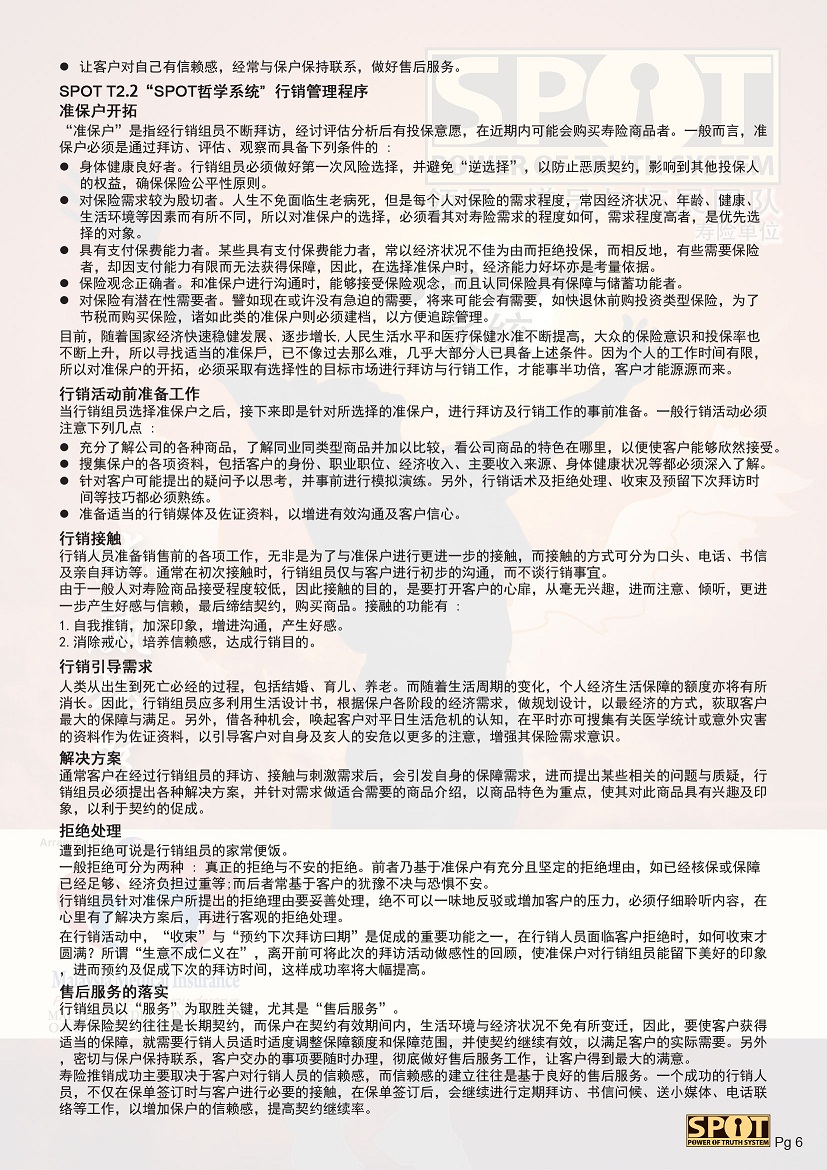
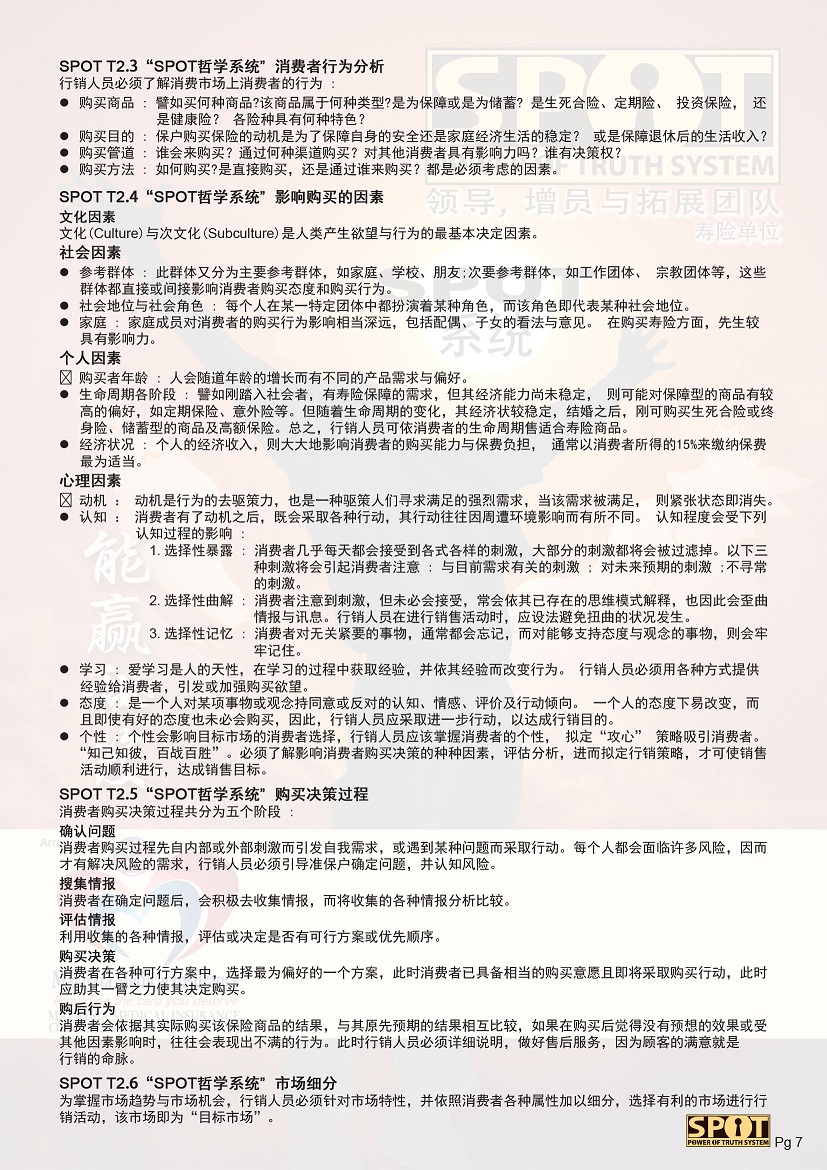
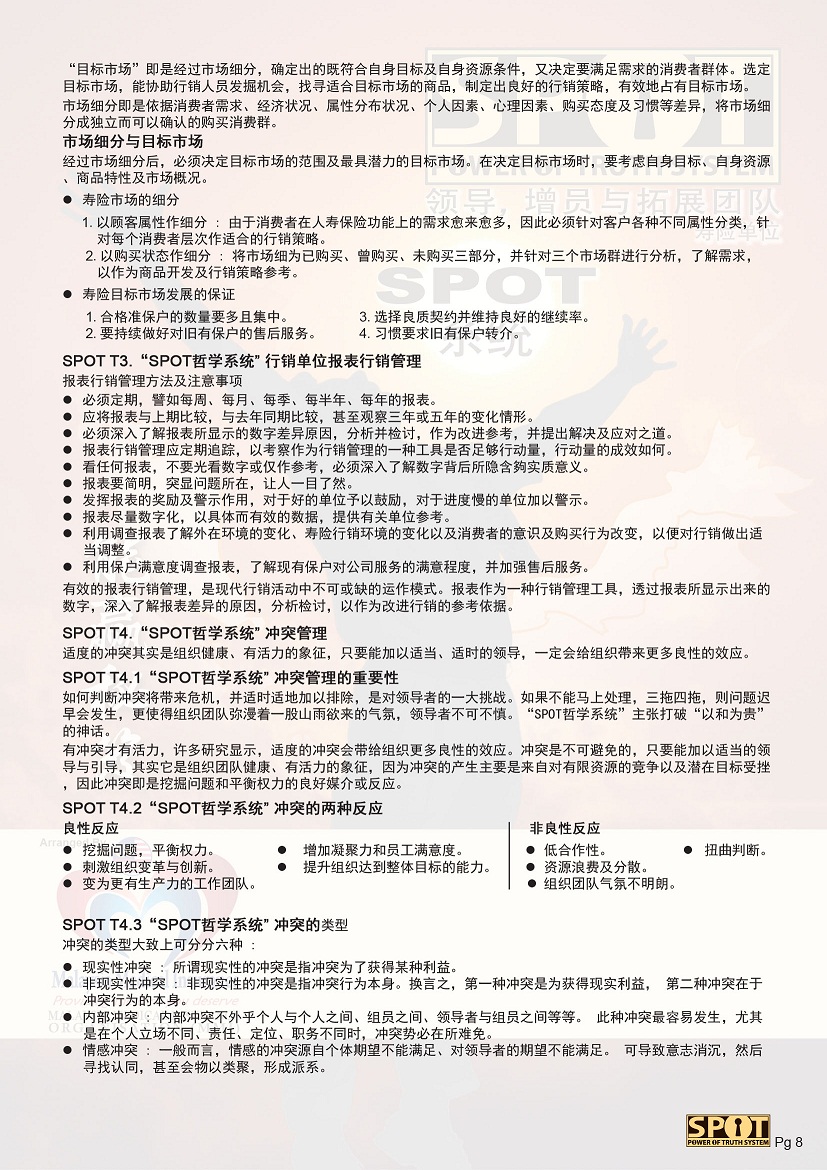


Arranged by
Malaysia Medical Insurance Organization (MMI)
Malaysia Medical Insurance Organization (MMI)
马来西亚医疗保险机构
Organisasi Insurans Perubatan Malaysia
Email : mmicare@medicalinsurance.com.my,
Homepage : www.medicalinsurance.com.my
SPOT Agency Development Program
Powered By
Mr Anthony Chin
JALAN JEJAKA, TAMAN MALURI,CHERAS,









